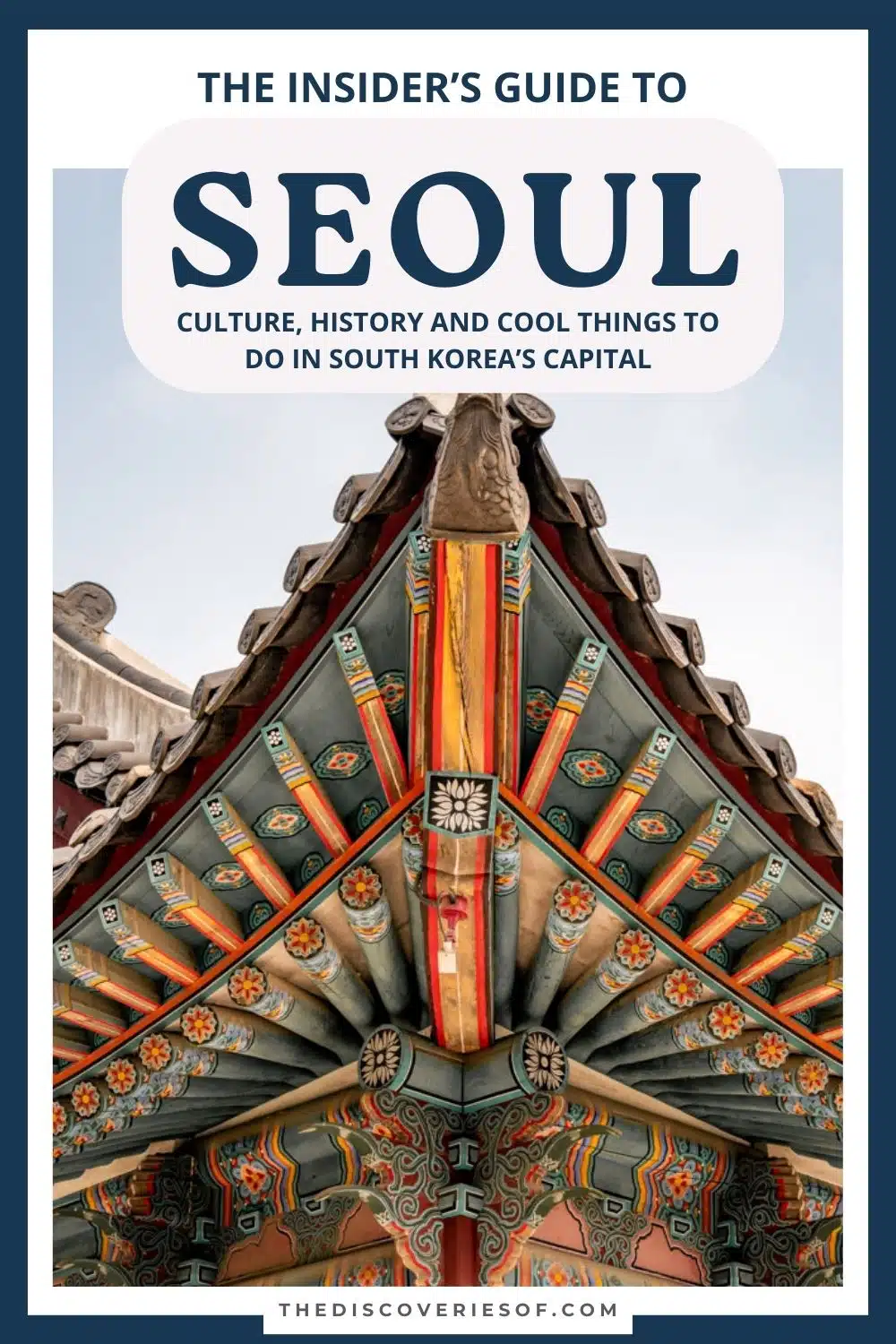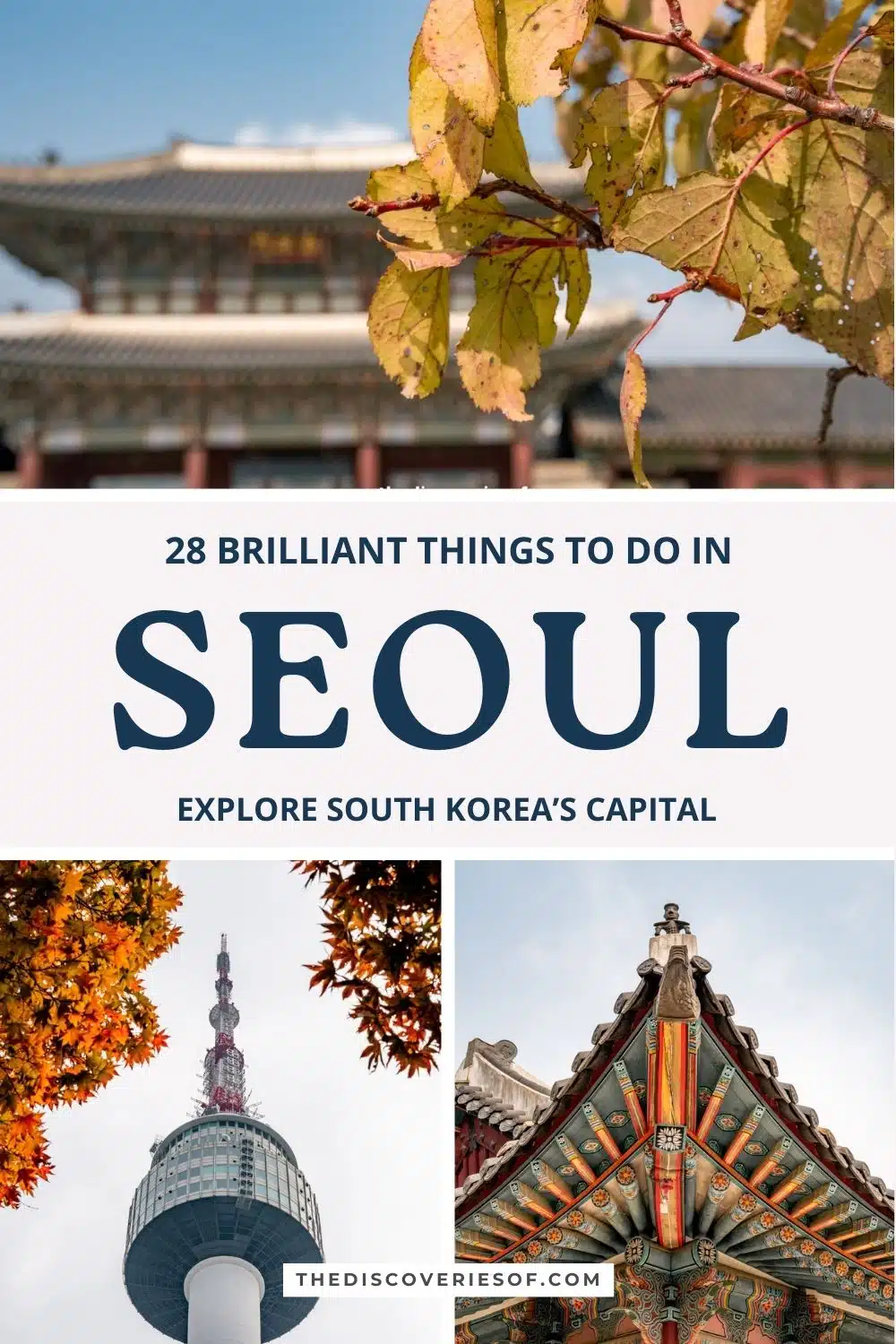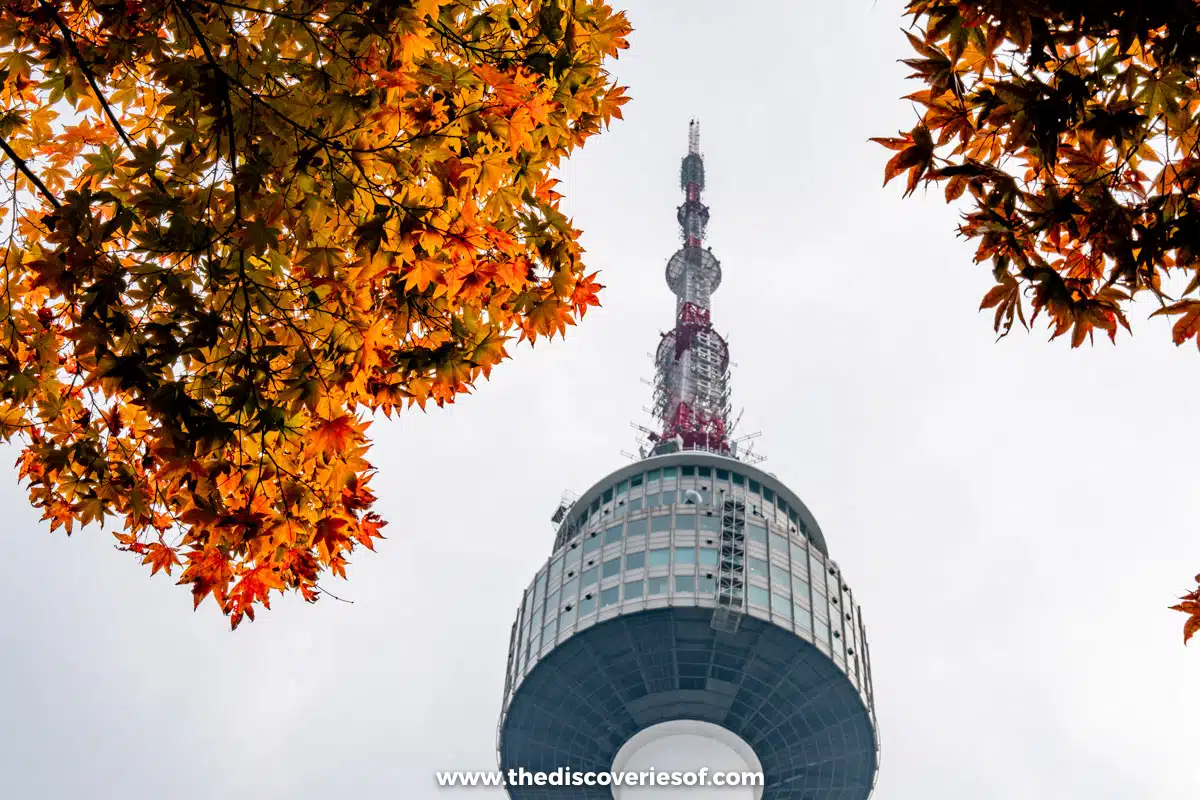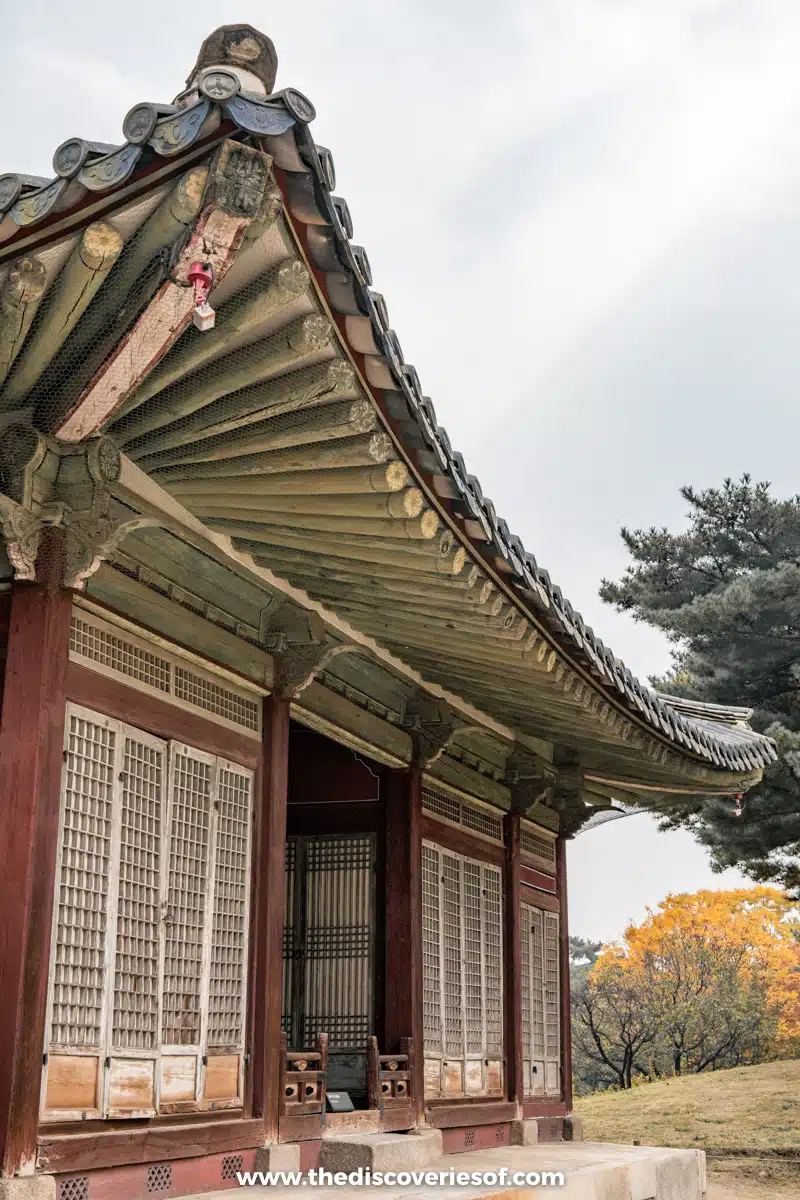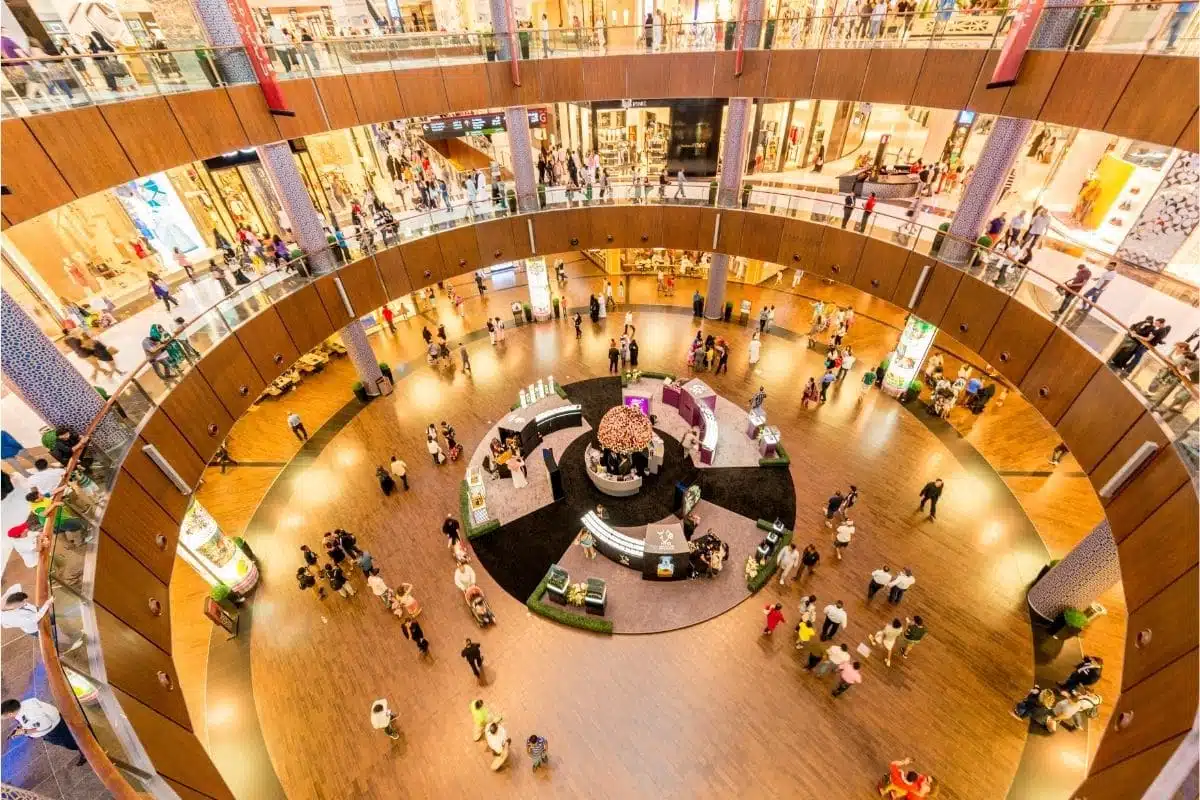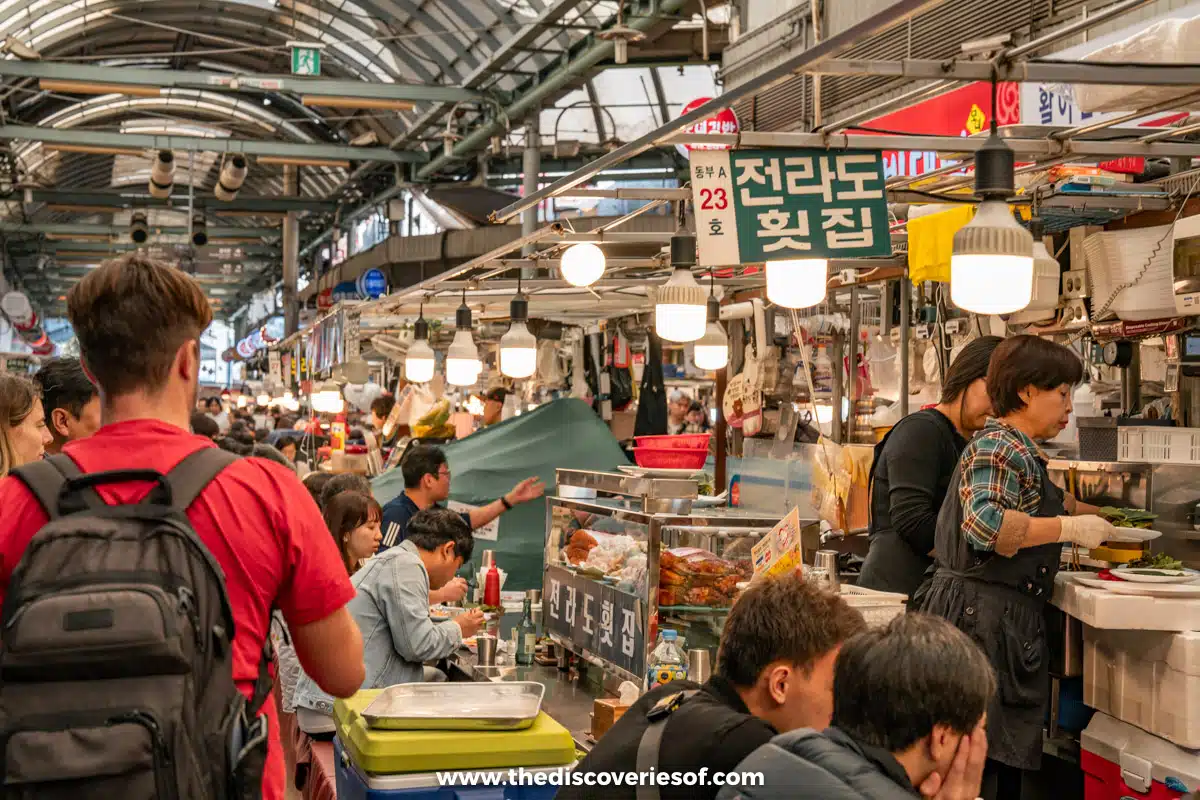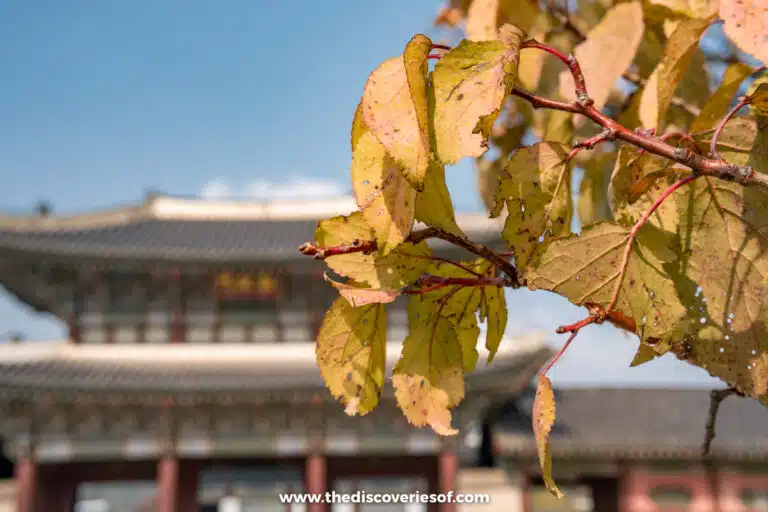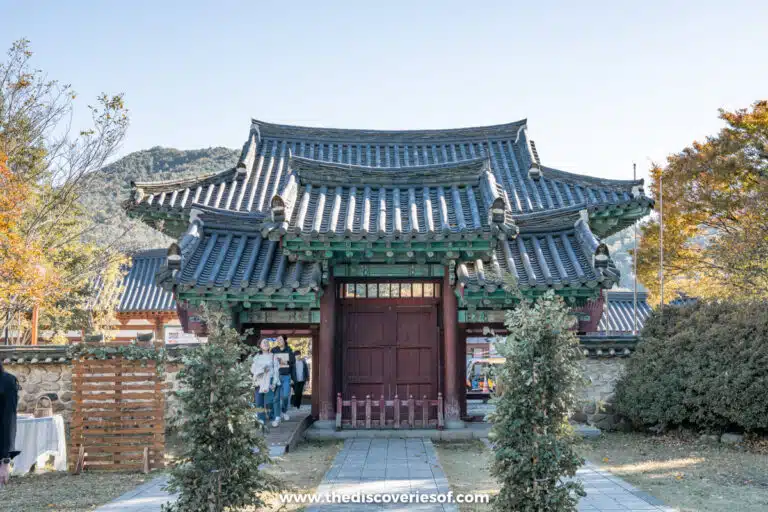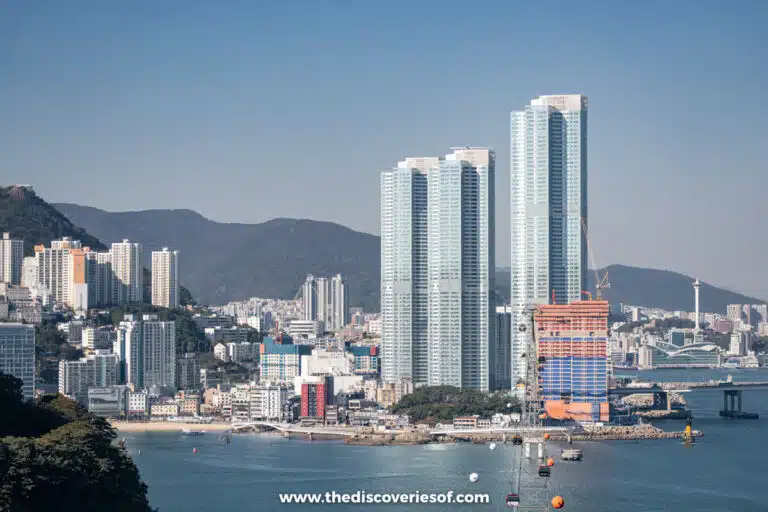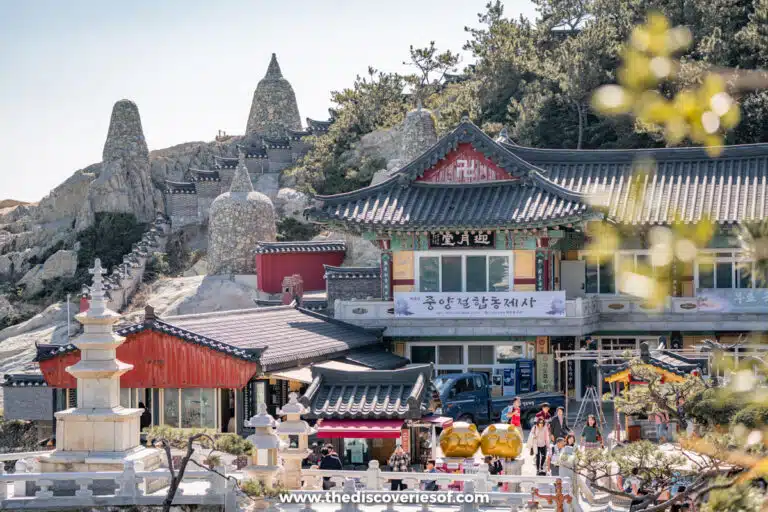Are you ready to explore South Korea’s Capital? Dive into the city’s popular landmarks, cool hangouts and historical sites (while discovering a few hidden gems along the way) with this guide to the best things to do in Seoul.
Visiting a city as massive as Seoul isn’t something you can necessarily just leave up to chance. That is if you want to get the most out of your trip. Sure, you’ll probably still stumble on some phenomenal food (there are literally thousands of spots to choose from), and you might run into a Joseon-era palace or two by sheer luck.
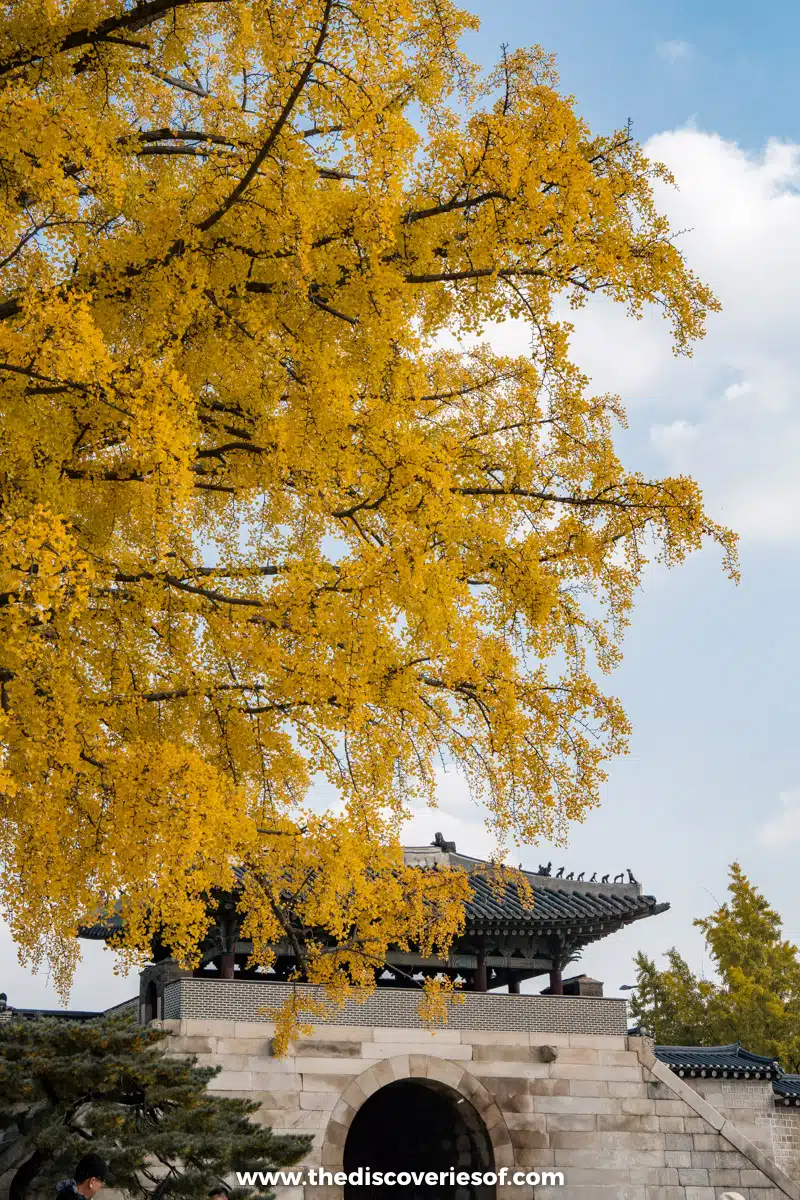
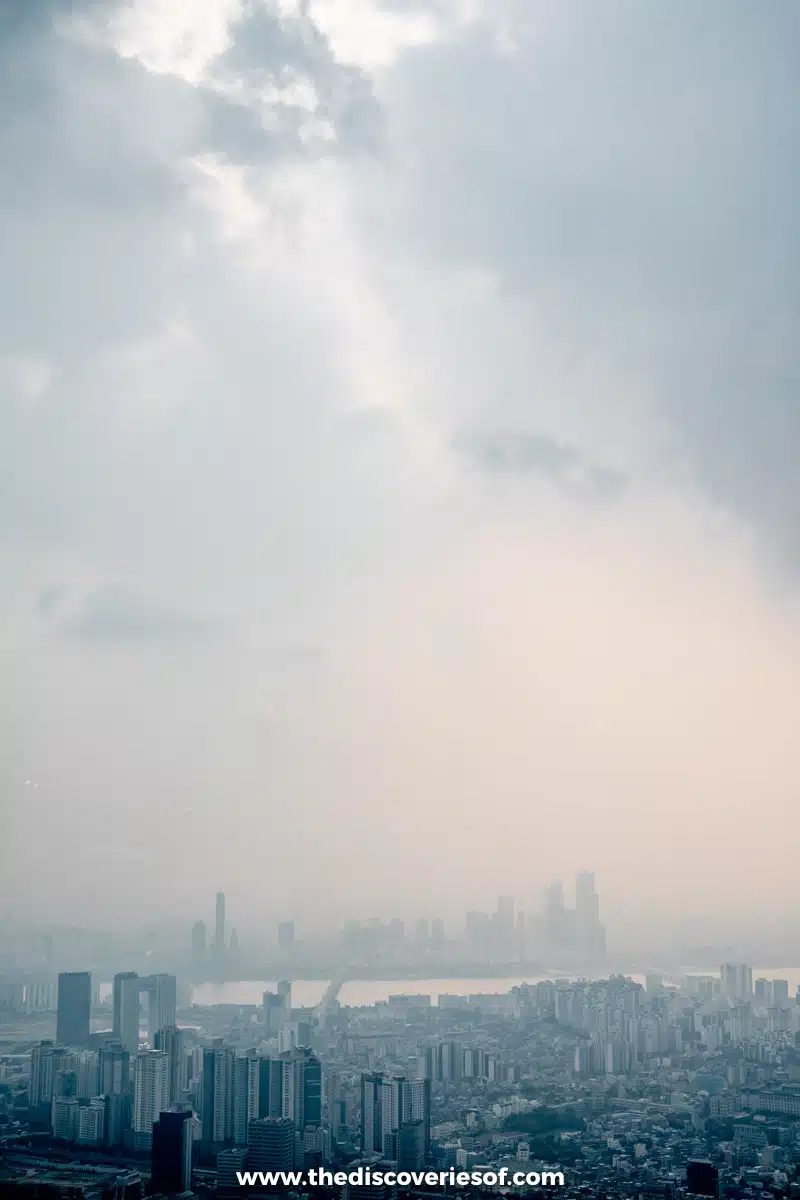
But doing a bit of research and planning will really help you make sense of the rich history and culture that proudly share Korea’s capital city with striking modern architecture, exciting pop culture pop-ups and unique spas.
Lucky for you (and me), I just returned from another visit to Seoul. It was a whirlwind of activities and adventure where I discovered charming hanok villages, futuristic AR-guided tours and ate the best BBQ on the planet*.
Ready to learn more about where you should visit in Seoul? Put on some comfy shoes, we’ve got some adventuring to do.
*yeah I said it.
Best Things to Do in Seoul
Immerse Yourself in History at Changdeokgung Palace
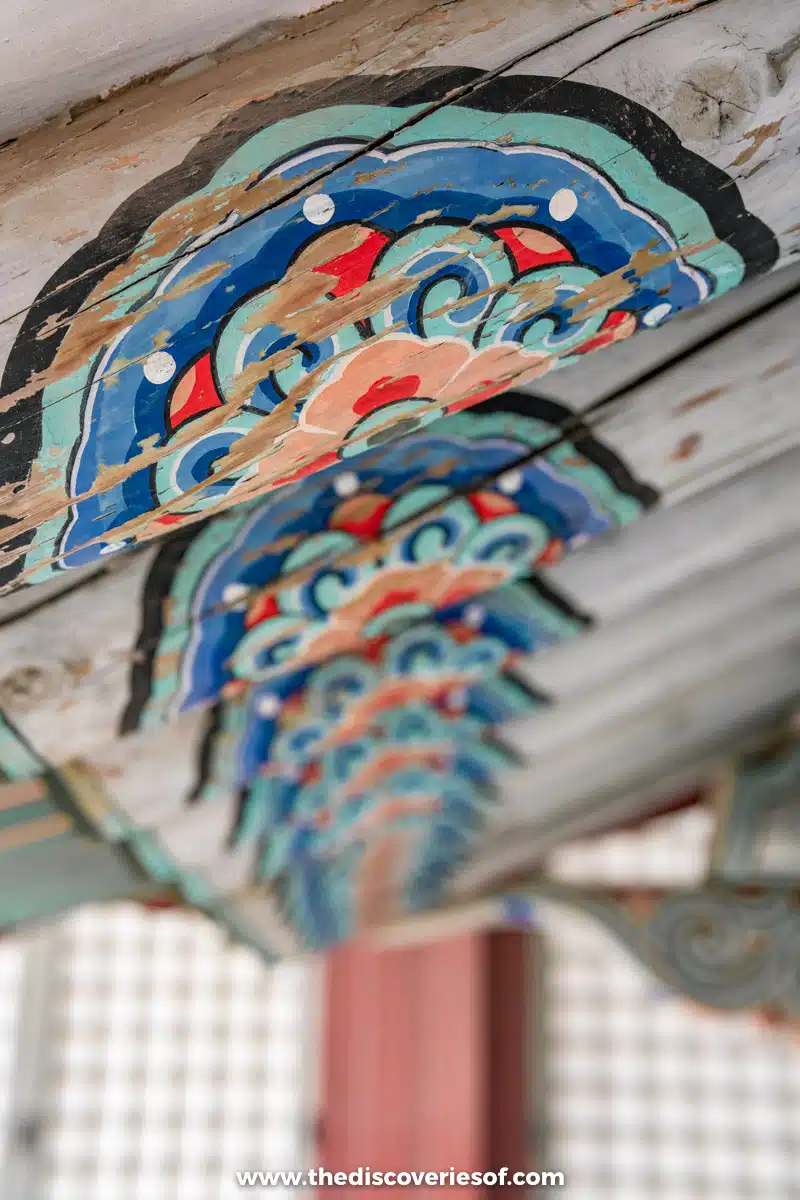
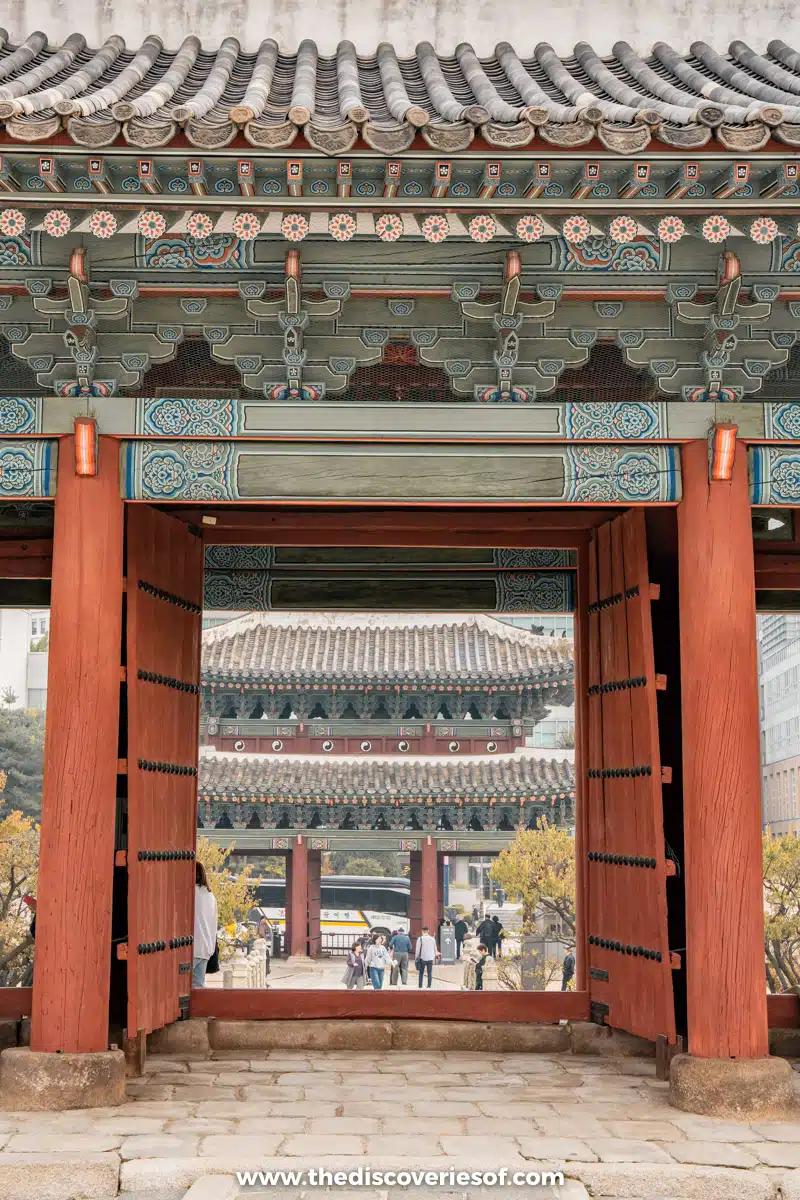
The Joseon Dynasty ruled over South Korea for a 500-year period, so it’s little surprise that you can find beautiful examples of Joseon architecture at landmarks like Changdeokgung Palace, one of the city’s most striking spots.
Although many of the wood and stone buildings burned down during the Imjin War in the late 16th century and again under Japanese occupation in the 20th century, Changdeokgung Palace still boasts nearly ⅓ of its buildings from the 17th century onwards.
Changdeokgung Palace was built as a second royal palace, and also served as the royal court for centuries. Interestingly, the first (Gyeongbokgung Palace) was made because King Taejong actually murdered his sibling there.
If you only have time to visit either Changdeokgung (entry below), I’d recommend going for Changdeokgung as the complex is more extensive and the gardens are beautiful too.
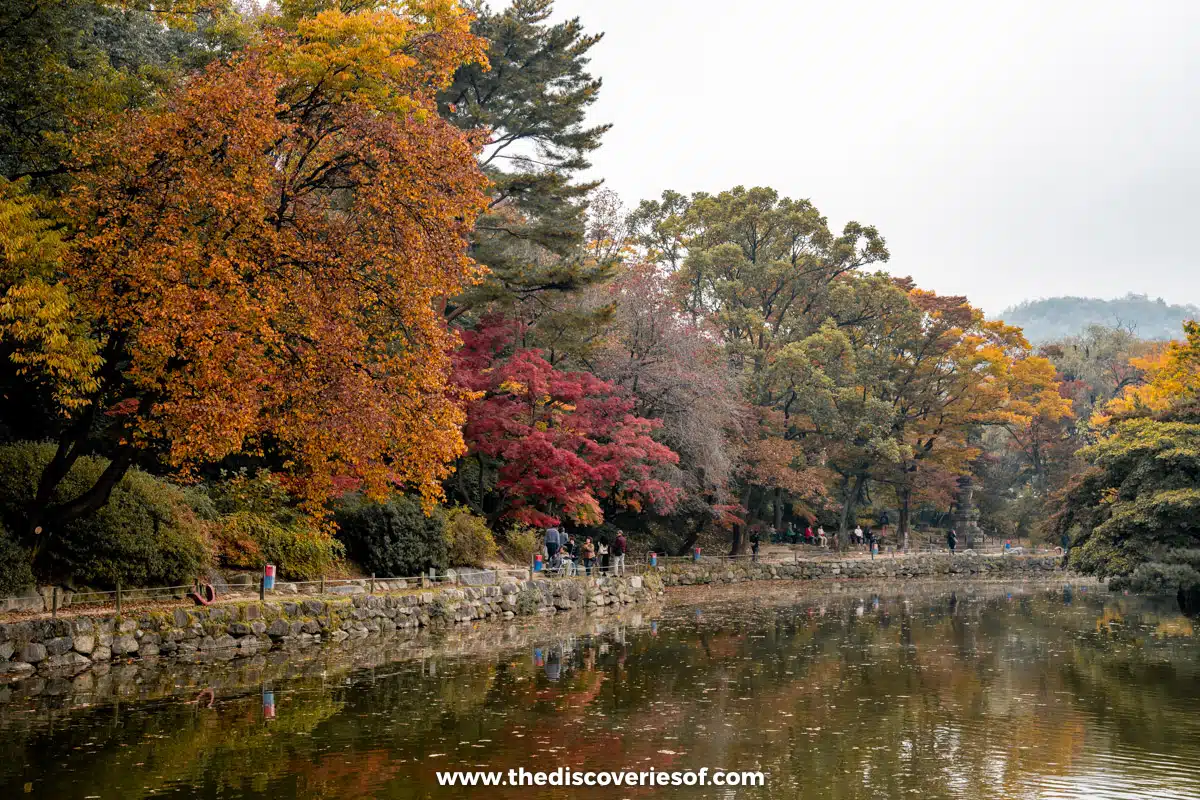
Walk through the courtyard to see cherry blossom trees, reflective ponds, and Joseon-era pavilions that blend in seamlessly with the surroundings. It’s lovely.
Top Tip
Head to the marked building and use their Changdeok AR-irang app to “attend” a historical 60th birthday party for the emperor’s mother. The experience adds fascinating historical context to the ways in which the palace was used in the past.
Go to Gwangjang Market
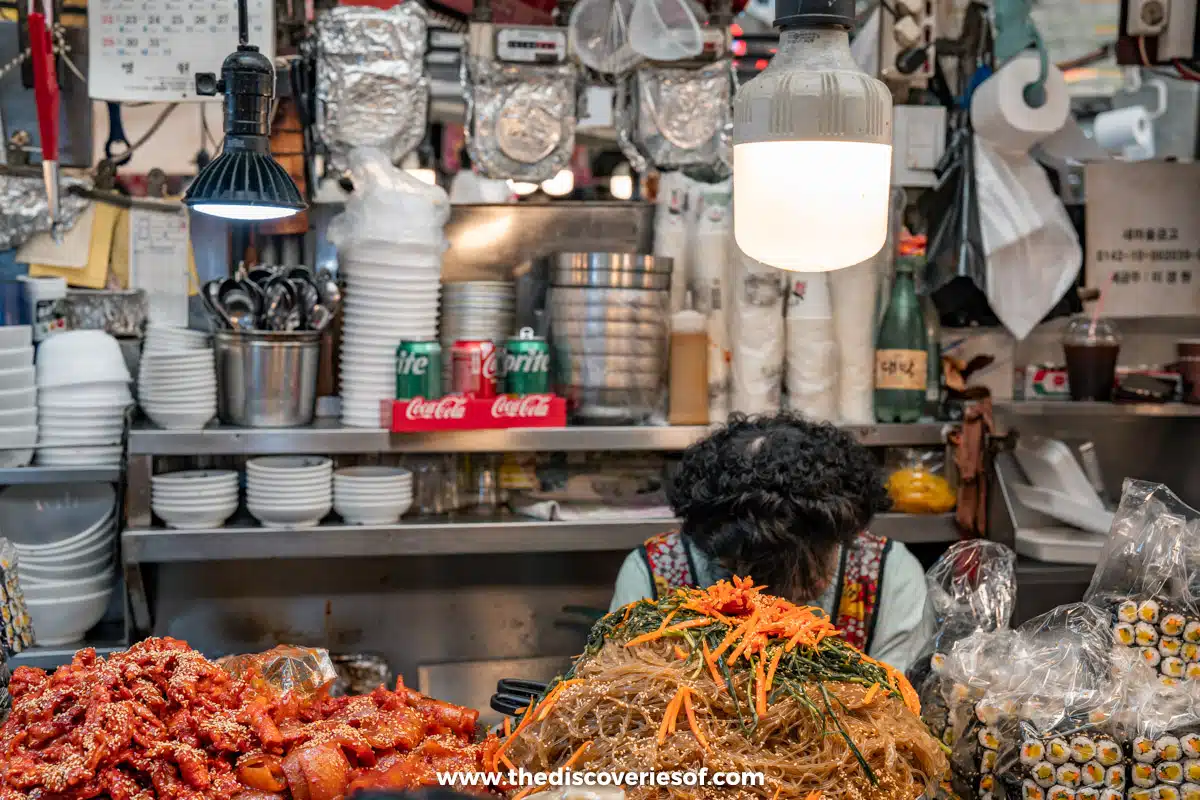
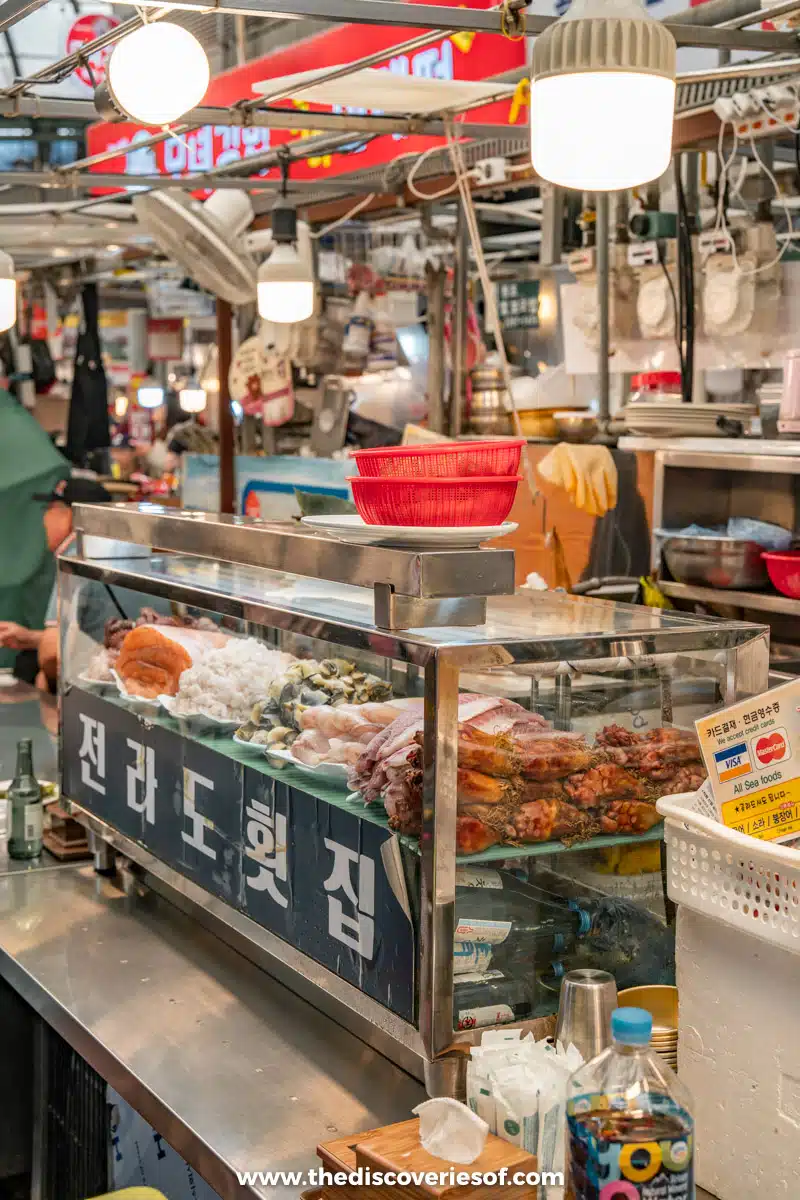
You’ve probably heard of food markets as one of the top things to do in Seoul, but I’m guessing you’re not content settling on just any market.
If you want the market to visit in South Korea’s capital city, it’s Gwangjang Market. Hands down.
Why? The amazing selection of stalls feature vendors that sell pretty much every kind of South Korean food imaginable – and it’s been going strong since 1905. It’s big, it’s busy, and it dishes up some of the most amazing street food in the world.
If you’re wondering what to eat when you’re there, well… everything. You can start with knife-cut noodles (Gohyang Kalguksu) in a savoury broth before sampling anything from bibimbap to handmade dumplings. And don’t sleep on the Korean pancakes (more on that below).
Top Tip
You can also find gorgeous hanbok clothing here, the traditional outfits Koreans have worn for centuries.
Namsan Cable Car
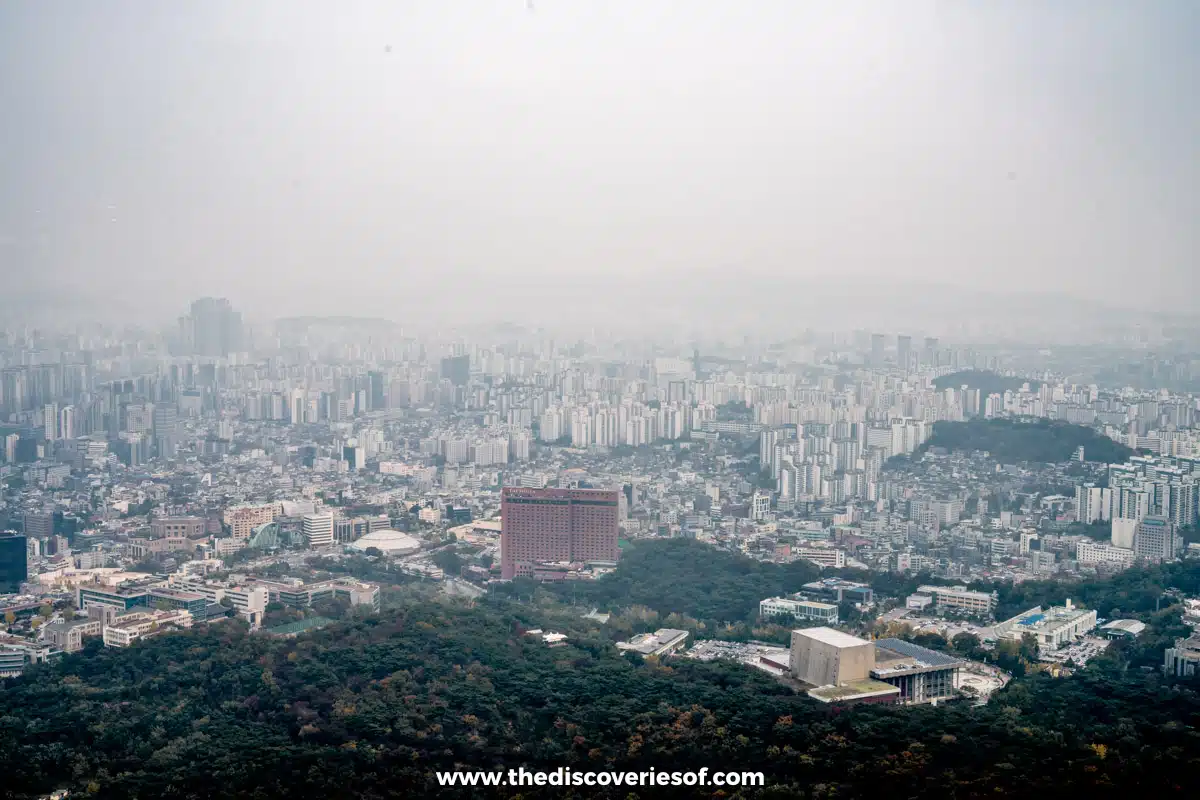
If you’re looking for an easy (cheaty?) way to see the N Seoul, this is it. For just 15,000 won (£9) for a return ticket, you can soar high above the outskirts of Seoul on the Namsan Cable Car along a 605 metre (1,984 foot) track that takes you up to N Seoul Tower.
Chances are that it will be rammed on board. I had to (victoriously) shove my way up to the edge of the glass for a good view, but it was worth the slightly awkward exchange with fellow travellers. I mean, the views, come on.
Settle into the front of the car if you can, and you’ll enjoy unique perspectives of Namsan Mountain and the tower on your way up the hill – and equally impressive views of the city on the way back down. Ride at dusk to see downtown Seoul light up on the short but rewarding ride.
N Seoul Tower
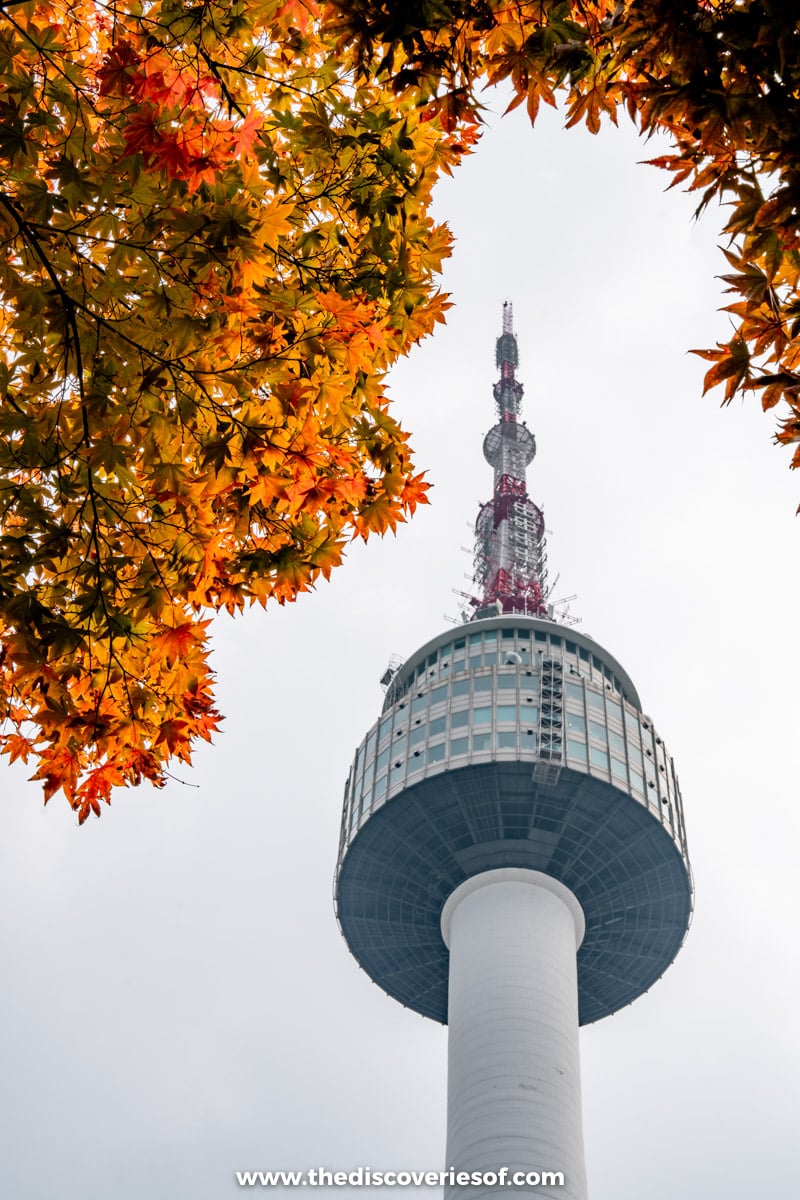
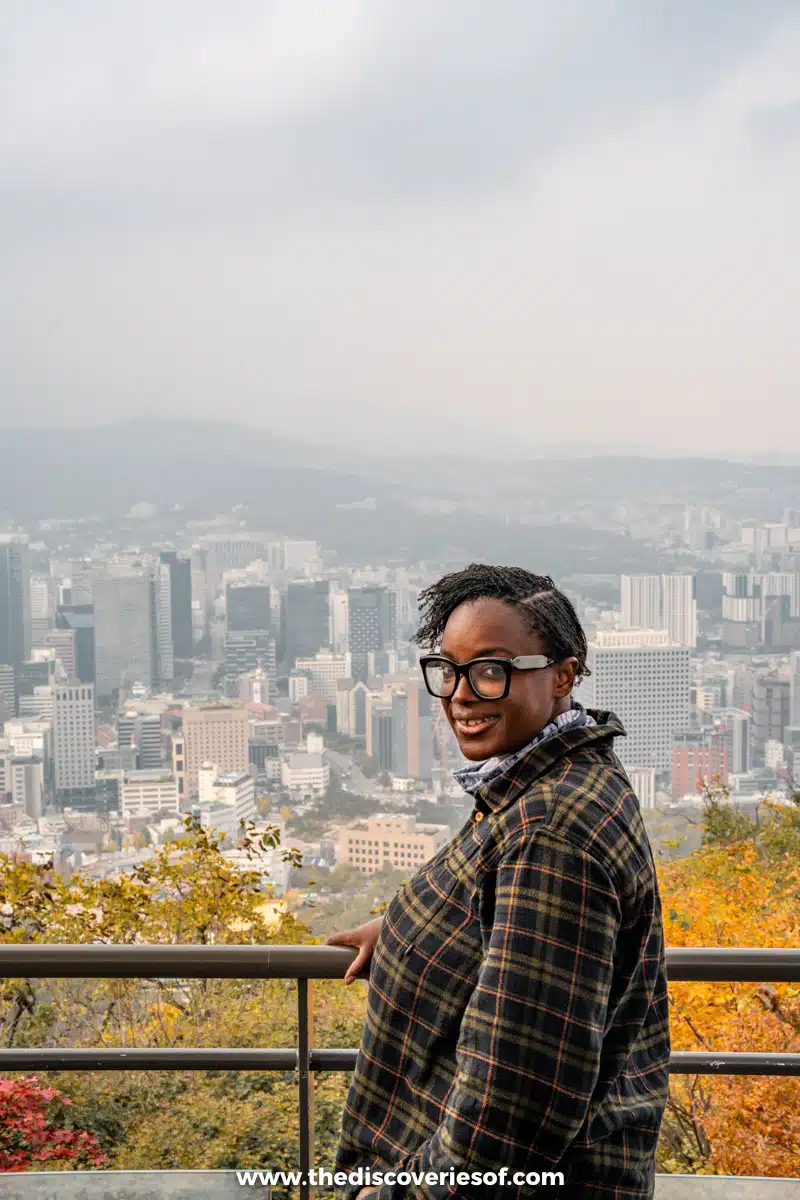
You made it to the top (whether on the Namsan Cable Car or the 30-minute hike to the top), now it’s time to enjoy the view at N Seoul Tower.
Once you reach the tower, you can head straight to the top. If you haven’t bought your tickets ahead, you can purchase them at the ticket booth on level 1F.
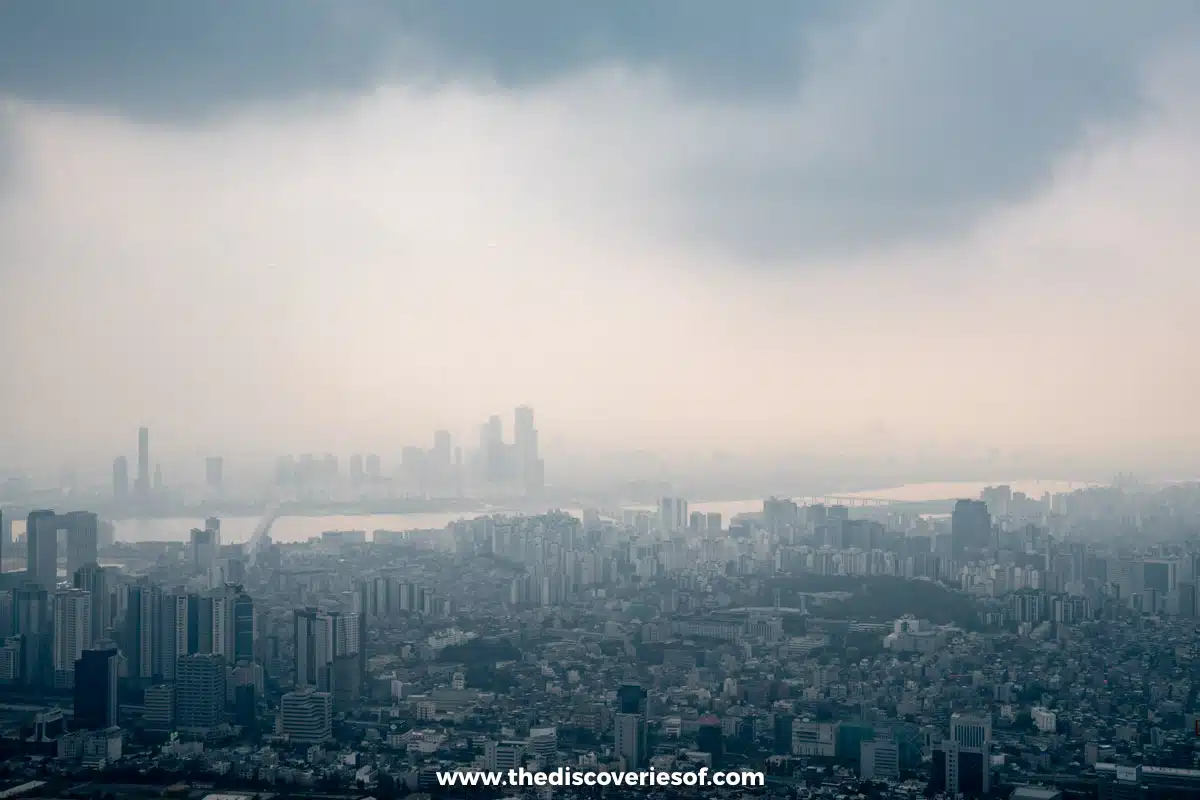
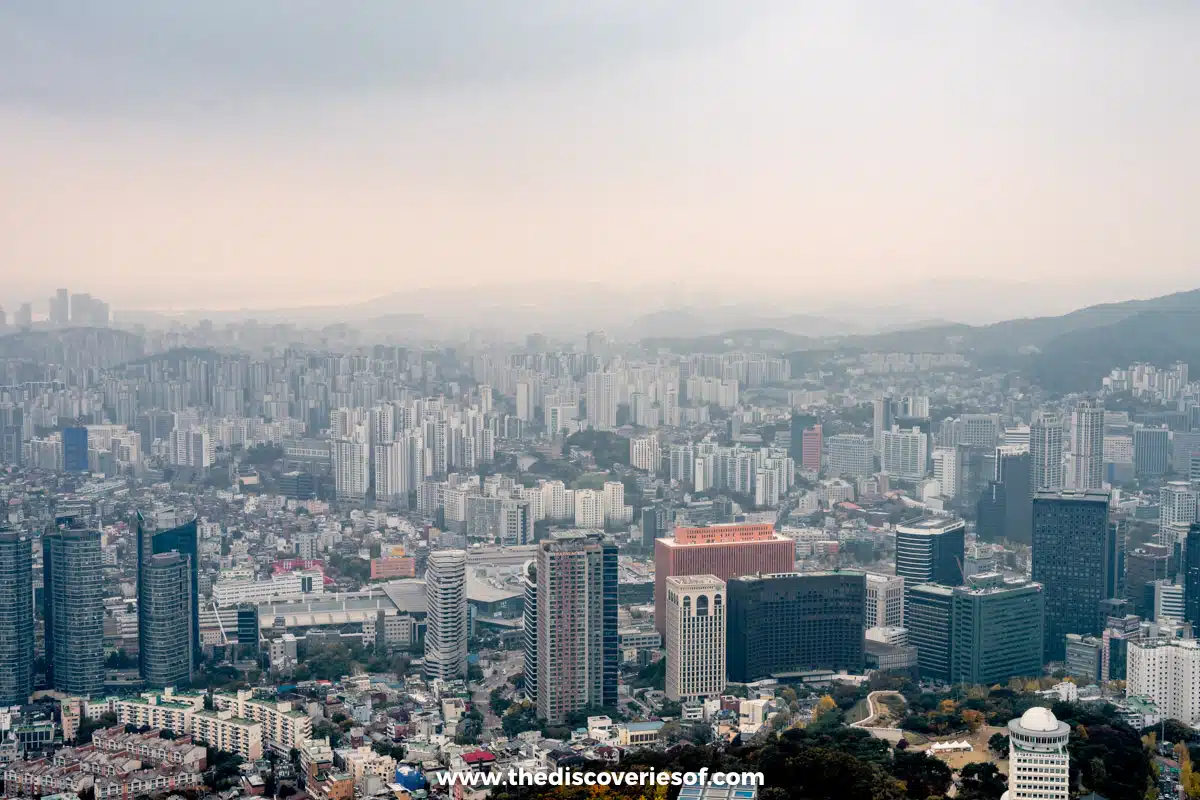
From the top of the tower (5F), you can see the entire city from the observation deck. The views are insane. But you can actually get up even higher if you eat at N.Grill (a French restaurant that’s supposed to be quite good, though I haven’t had the chance to try it).
There’s not much to do at the top if you’re not eating or strolling around the observation deck, save for a weird shopping area.
Click here to reserve your day and time for N Seoul Tower.
Top Tip
The loos come with mirrored walls and floor-to-ceiling windows – a bit strange but the view is stunning!
Take a Day Trip to the DMZ
If you only have time to leave the city for a day trip, the Korean Demilitarized Zone is an option you’ll want to consider.
The line drawn across 4 km (2.5 mi) x 250 km (160 mi) between South and North Korea offers a chance to learn a bit more about the Korean War and the neutral territory that was created at the end of the Korean War in 1953.
A guided tour shows you fascinating sites like the 3rd infiltration tunnel (which North Korea dug out in hopes of a surprise attack) and Gamaksan Chulleong Bridge, but you often need to book ahead, and it can take up an entire day.
Drive to Aegibong Peace Ecopark
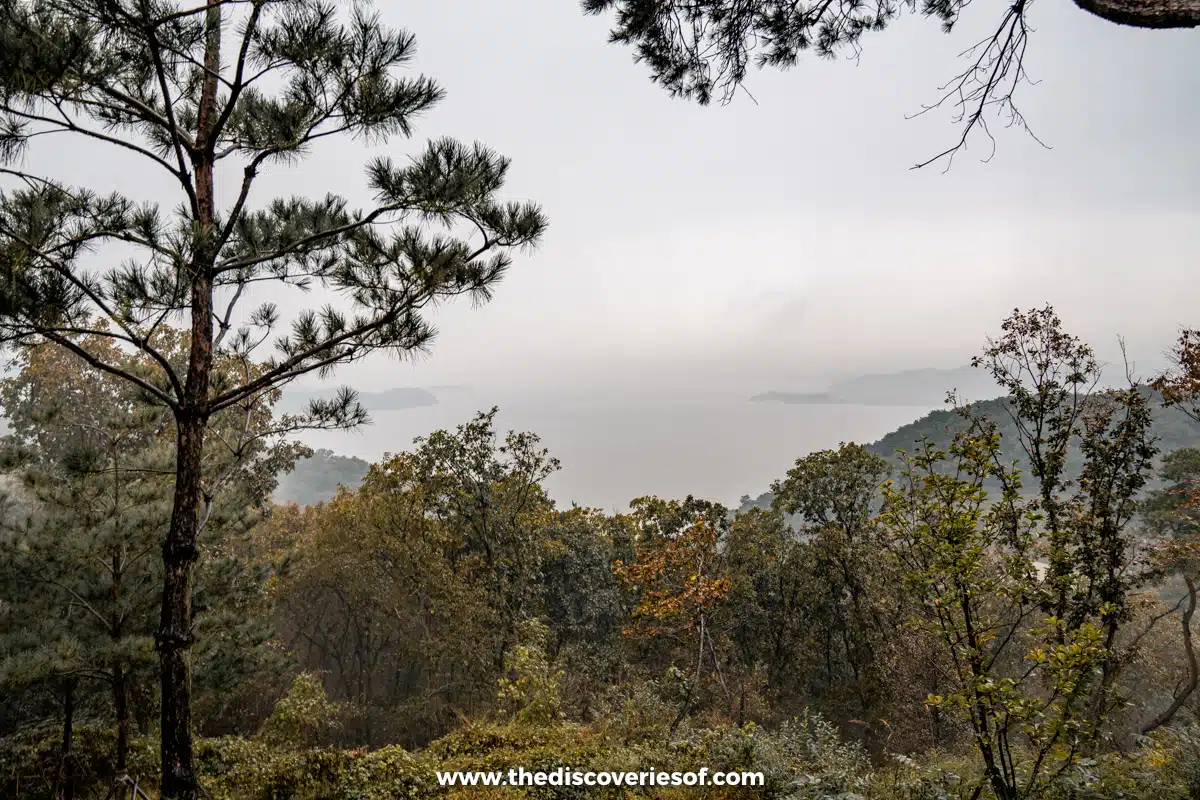
Many travellers opt for a guided tour of the DMZ, and that’s a great way to do it if you have time. But if you’re like me and want to pack in as much as possible, you might opt for an alternative to the standard tour.
Aegibong Peace Eco Park offers a DIY approach, where you can take the 90-minute drive over and learn a ton about the history of the Korean War. You also get a pretty great view of the city of Pyongyang on a clear day, which is as close to North Korea as most people will ever get.
The area itself was an important landmark during the war, known as Hill 154. It was a battleground then but also home to the Hangang River, an area where wildlife still thrives long after the war.
It’s a relatively new spot, but an alternative way to see the DMZ that’s quite beautiful. I highly recommend it.
Read Next
Want to see more of South Korea? Read my 10-day itinerary to see more of the exciting country beyond Seoul.
Tour Gyeongbokgung Palace
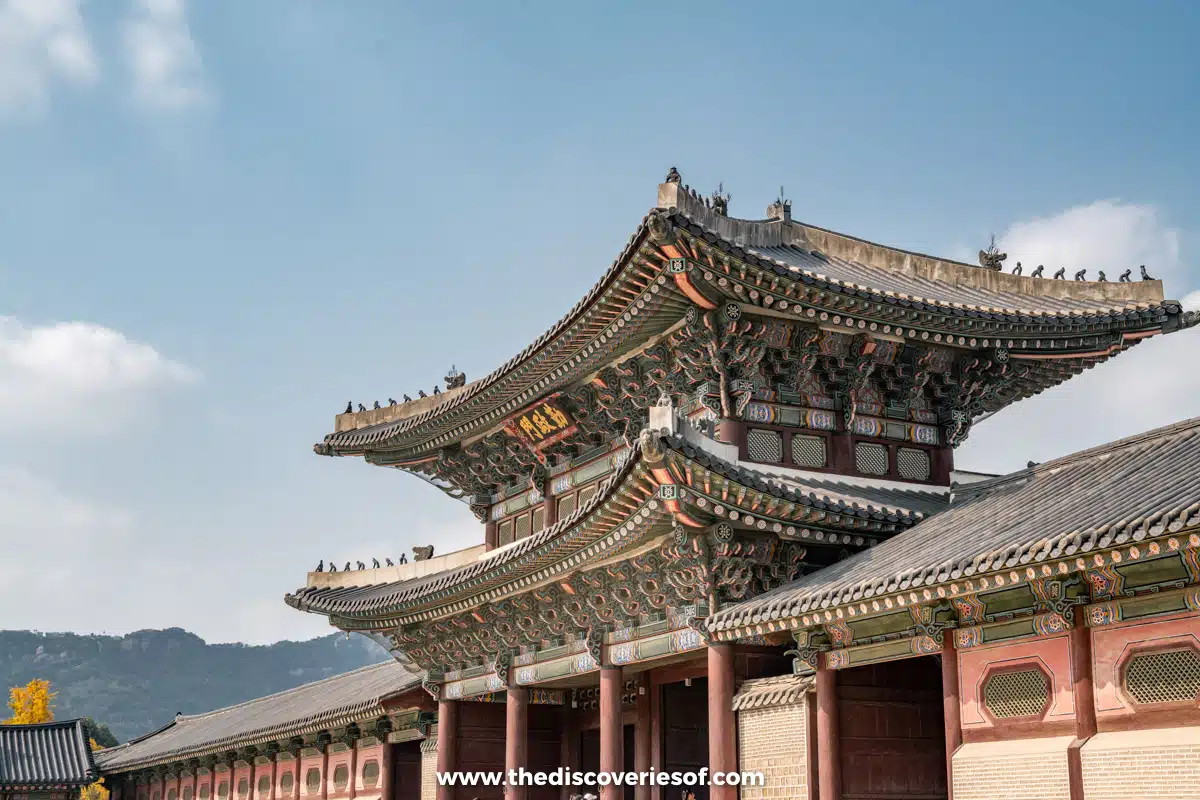
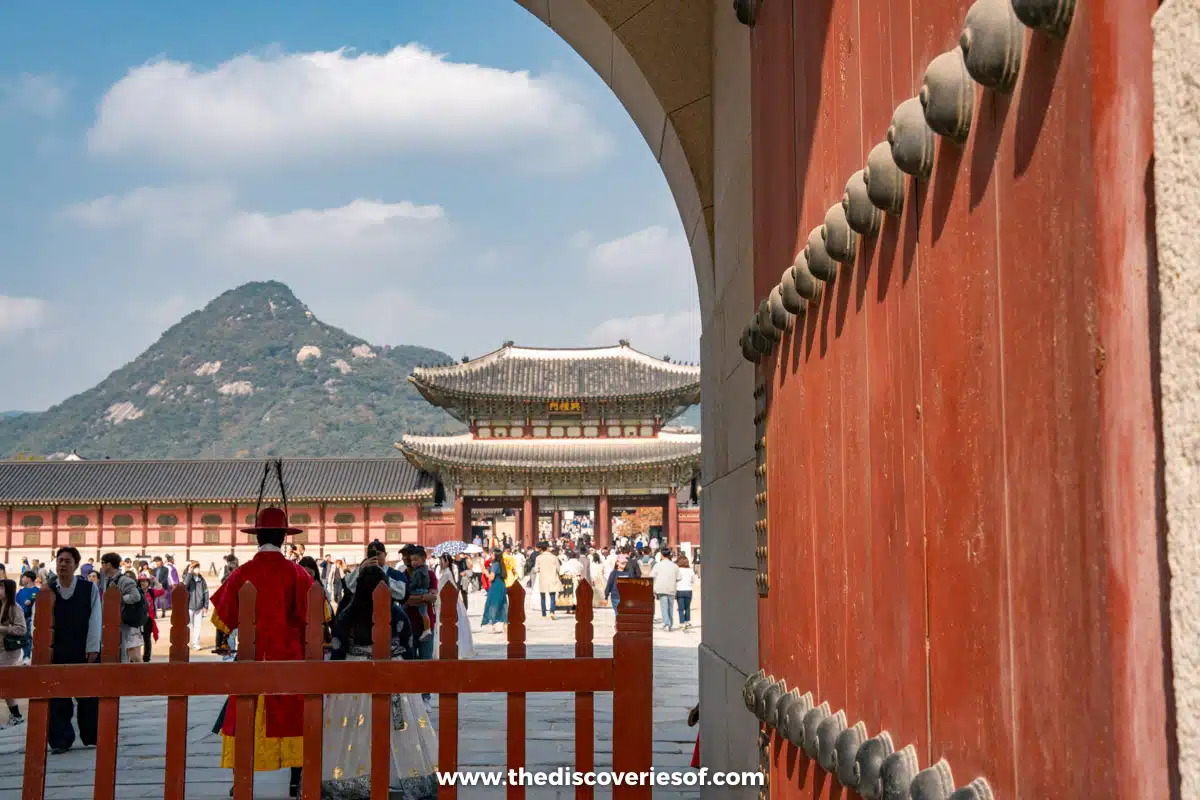
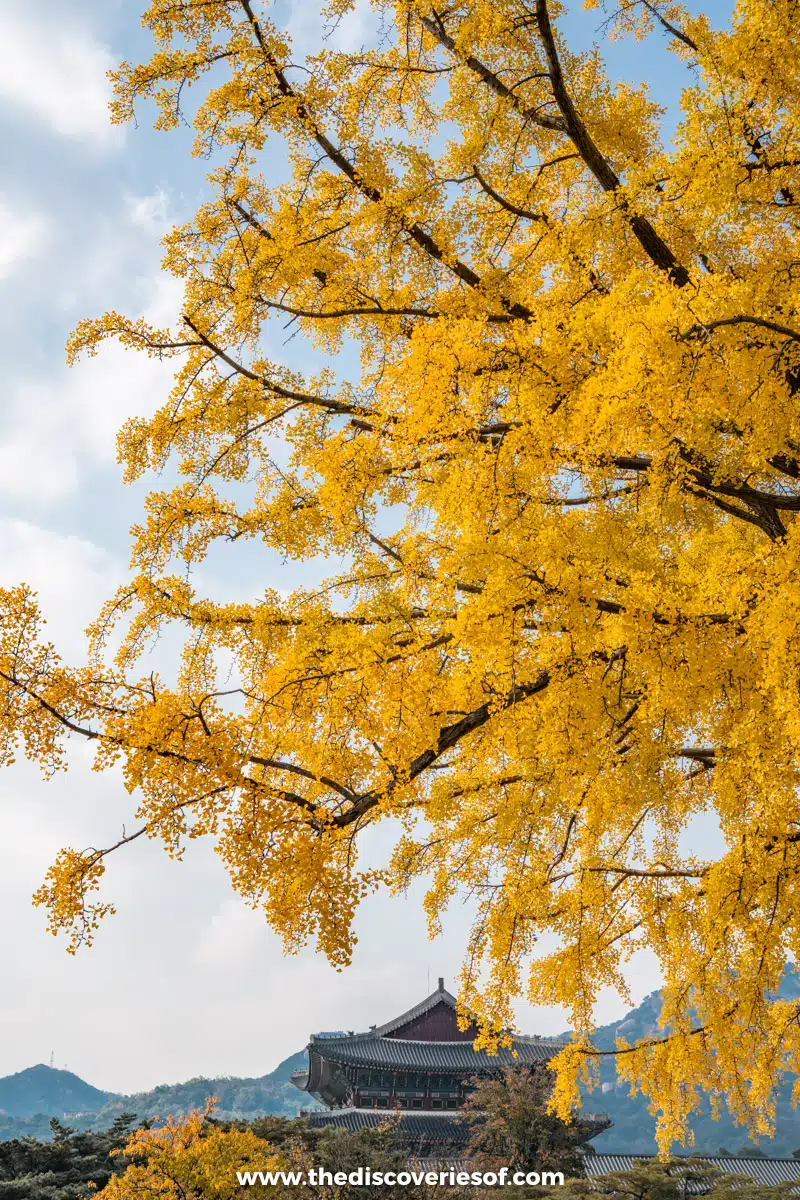
If you have time for another of the 5 Joseon Royal Palaces, you definitely want to make it a point to visit Gyeongbokgung Palace.
Seoul was the heart and soul of Joseon Dynasty rule, and the 14th-century Gyeongbokgung Palace was the first and largest palace until it was burned down in the Imjin War around 1592. It took centuries to build it back (and it was destroyed again in the early 20th century), but over the past 30 years, it’s slowly being restored to its former glory.
So, what should you see when you’re here? Lots.
Start at Gwanghwamun, the sprawling pagoda-style gate that greets you when you first walk up. The beautiful wood and stone building features intricate architecture and design, and if you look closely, statues of dragons adorn the courtyard.
Other highlights include Gyeonghoeru, a banquet space perched high above a pond, and Heungbokjeon Hall (one of the newest additions), which has stunning detail etched into the wood and stone walls.
Jijimbang at Spa Lei Seoul
Looking for cool things to do in Seoul? Immerse yourself in spa culture late at night (like the locals) and treat yourself to a Jijimbang at Spa Lei Seoul.
Jijimbang is basically like a spa experience that meets a low-key urban escape. You can chill out in icy plunge pools, move gradually from warm to hot baths to soften your skin and spoil yourself with K-Beauty products and facial scrubs that have you come out feeling all brand new.
Be warned, you go through the spa experience completely naked, and it’s more a “functional” spa experience than a “relaxing” one, but it’s one of the most unique and rewarding experiences in Seoul.
Top Tip
You can pay by card to enter, but bring cash for the massages and scrubs. I spent around £70 for an hour’s scrub, massage and facial combo.
Take a Stroll Along the Cheonggyecheon Stream
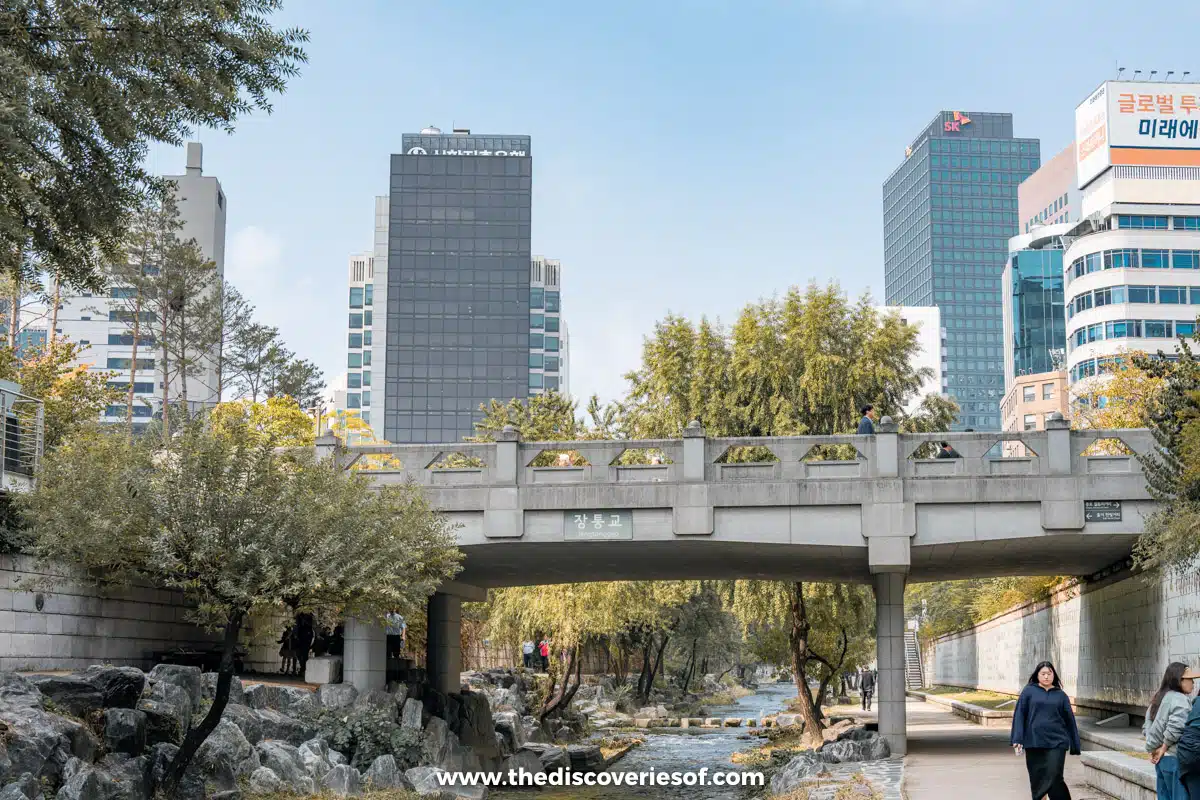
Finding nature in urban spaces is always a welcome treat. And this park that follows along about 3.6 miles of Cheonggyecheon Stream is no exception. It actually runs all the way from Inwangsan Mountain and provides an urban respite from the skyscrapers and freeways.
The city began renovating the site of a former sewage system and began to restore the former beauty – it’s actually been a great success. Some locals even kick off their shoes, wading around the water on warm days and enjoying the small waterfront park too.
Now, you can spend sunny (or cloudy) afternoons along the east-west running river, taking in murals, art installations, and vegetation. There are also some incredible historical landmarks along the stream’s course, including the recently-restored Joseon-era stone bridge Gwangtonggyo.
Top Tip
Keep an eye out for art installations around the park. Decorations and lights for celebrations and holidays (like Christmas) are a fun sight to see.
Walk Through Bukchon Hanok Village
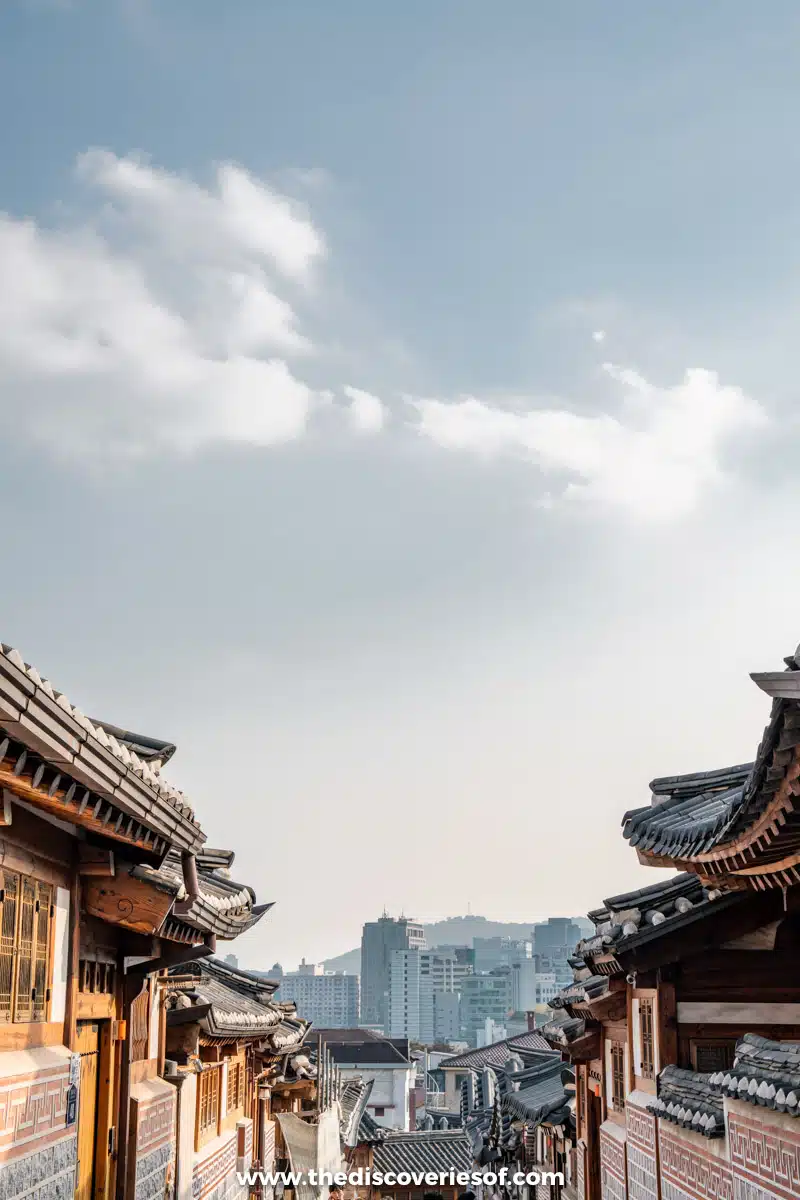
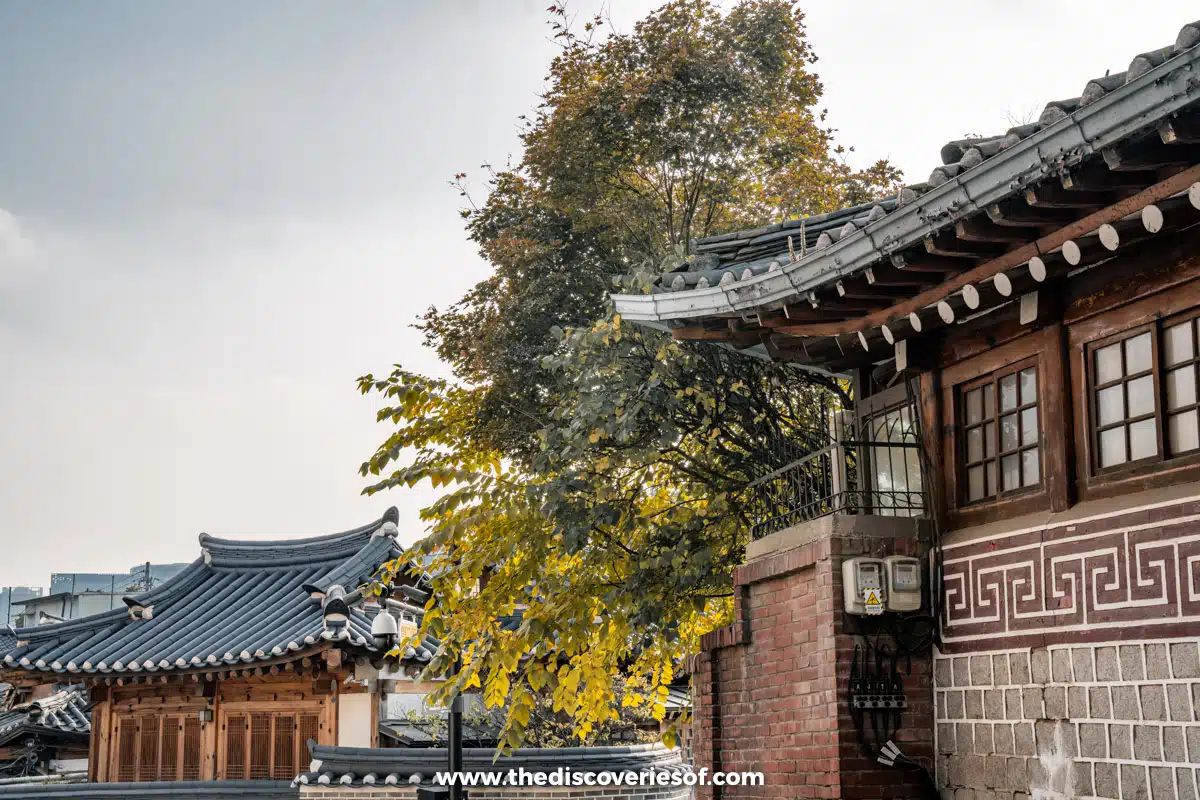
Visiting a hanok village is a must when you go to South Korea, and luckily, you don’t have to leave Seoul to see one of the best.
Bukchon Hanok Village is a collection of around 900 Joseon-era homes right in the middle of the city centre.
Don’t go expecting a quiet and peaceful experience (again, it’s right in the heart of town and one of the city’s more popular spots) but you will see an impossibly pretty neighbourhood with wood and stone houses that date back around 600 years.
Unless you wake up at the crack of dawn, there will be tourists everywhere, you just need to kind of accept it. Roll with it, rent a traditional Hanbok outfit and time travel back hundreds of years.
Make time for the Bukchon Asian Cultural Art Museum, as well, which displays traditional Korean artefacts and historical documents from centuries past.
Read Next
Have more time in South Korea? Head to Jeonju to visit the spectacular Hanok Village to experience the most famous traditional neighbourhood in South Korea.
Feast on the Set Menu at Insadong Hangane Bulgogi Jumak
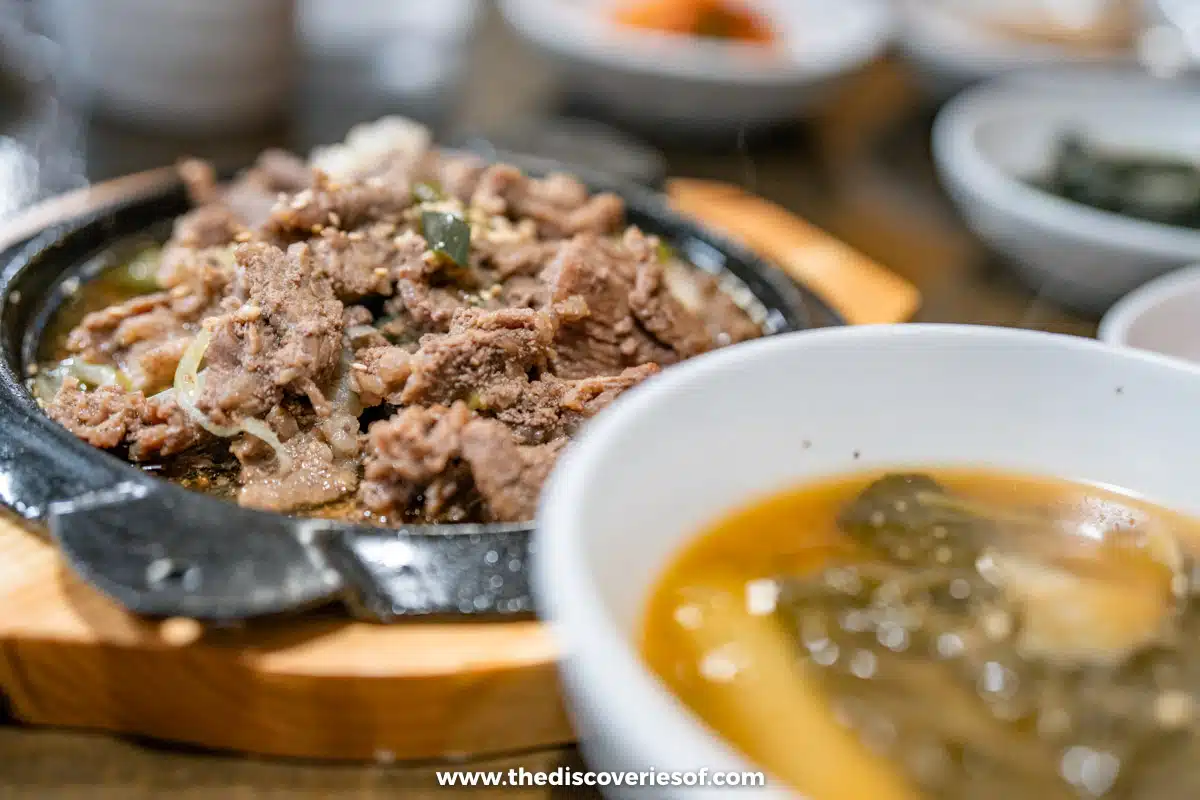
There’s no question that eating your way around the city is one of the true joys of Seoul. Get ready to eat a lot when you’re in Korea’s capital city.
The teeny-tiny Insadong Hangane Bulgogi Jumak is a stand-out restaurant in a town that’s full of amazing food. Don’t believe me? Arrive early for lunch or dinner, order the bulgogi set menu, and let the food do all the talking.
This place is no secret – not with the locals anyway – and it gets packed. But you can get in and out faster by asking for one of the traditional tables in the corner, where you dine on a floor mat. Do this.
Once your food arrives, prepare to nosh through one course to the next from soup and rice to pickled veg. But the beef bulgogi is the star of the show. And for just 18,000 Won (£11) for the whole set menu, it’s a steal.
Read Next
Check out my 3-day Seoul itinerary to map out where and when you should hit up the best restaurants.
Shop for K-Beauty Products
Do yourself a favour and see what all the K-Beauty hype is about at Olive Young’s flagship store in Myeongdong.
You may have heard a thing or two about the mostly plant-based products that have taken social media and the beauty world by storm over the past few years. There’s nowhere better to stock up on products than in South Korea itself!
Olive Young is the place to go for skincare, makeup, and masks – with familiar and up-and-coming brands. I’m not going to lie; I wish I brought another suitcase for all the goodies I came across. Let’s just say my one suitcase was significantly heavier on the way home.
Top Tip
If you bring your passport to the store (or hit up the desk at the airport later), you don’t need to pay / can reclaim the tax. Winning.
Wine Tasting and Dinner at Nine Tree Restaurant
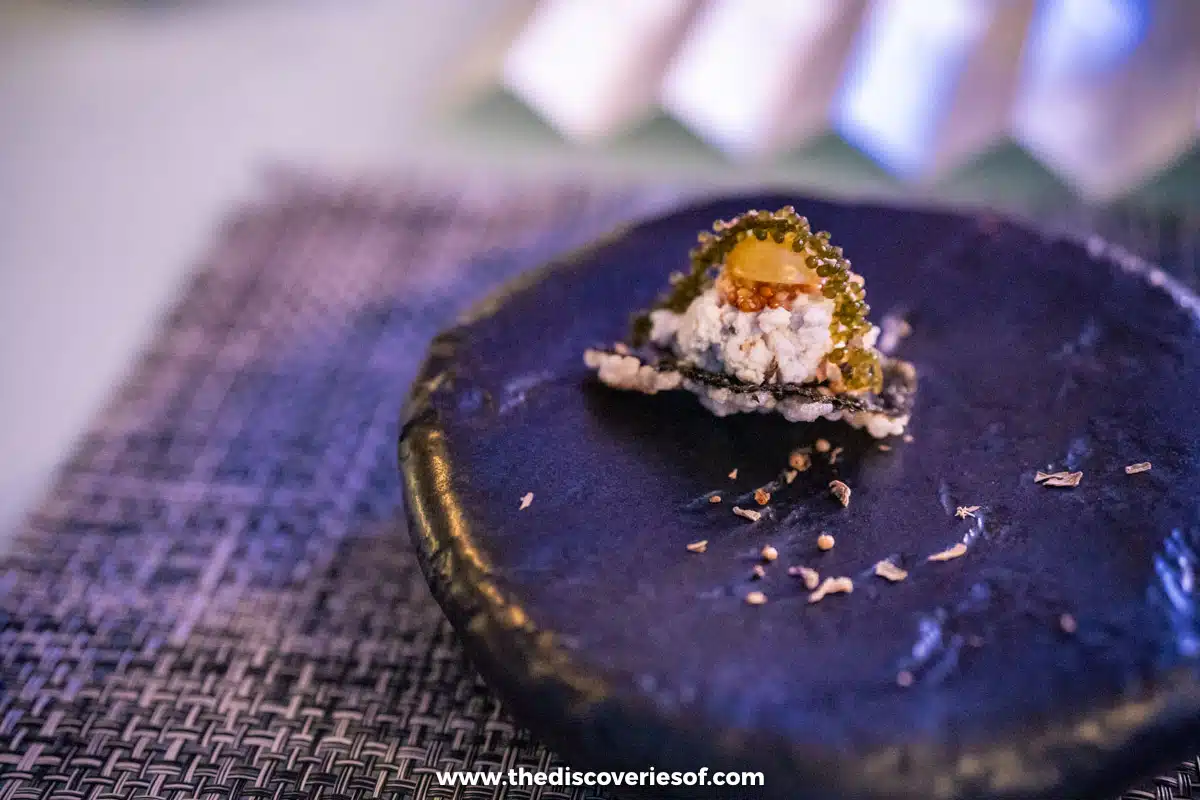
Looking for a unique dining experience in Seoul? Nine Tree Restaurant was one of the highlights of my last visit, a cool restaurant featuring a terrace with great views. As you might know, I’m not particularly fond of hotel restaurants, but this meal at Nine Tree Hotel in Insadong was an exception to that rule.
For around $165 per person, including matching wines, I was treated to a wonderful meal where the food was every bit as good as the views.
The service was professional, and the pace was leisurely, with each course allowing just enough time to enjoy before the next. Courses highlighted dishes from the land and sea, with highlights including grilled octopus and gently boiled beef served with chile peppers that had just the right amount of heat.
This is a great treat and worth splurging on when you’re in the Insadong neighbourhood.
Enter Namdaemun Gate
Seoul once proudly displayed 8 gates throughout, which helped protect the Joseon Dynasty rule and the city within. While a couple of these are no longer standing, 6 remain. IMHO Namdaemun Gate is the most impressive.
Located at the southern end of the city, the gate is a prideful display of traditional Korean architecture, with imposing stone steps leading up to a Pagoda building made nearly entirely of wood and tile.
Not too long ago (in 2008), most of the gate was destroyed in an arson fire by a local resident. But Seoul residents teamed up to rebuild the gate using traditional tools and methods with some of the same stone, wood, and tiles from the classic.
It now looks as impressive as ever, standing proudly in the city centre.
Yeouido Hangang Park + The Hyundai
Cross the Han River from downtown Seoul and discover a side of South Korea’s capital that too many tourists overlook. Don’t make that same mistake.
Yeouido Hangang Park is one of a dozen Han River parks, and it’s likely the most popular due to the central location and network of trails that are great for biking, jogging, or walking. It doesn’t hurt that it’s packed with cherry blossom trees, which light the park up in the spring with shades of crimson and pink in the right season.
Once you’re done taking in the scenery (and snapping a selfie in front of the I.Seoul.U sign), take a leisurely stroll to The Hyundai.
What is it? Technically a department store, more like an ever-evolving look into local pop culture – the mall features rotating pop-up exhibits of the best K-Pop groups and K-Drama icons. Stop by and purchase a fun souvenir to take back home.
Getting There
Ride the Line 5 subway to Yeouinaru Station and take a short walk towards the waterfront, and you’ll get there in about 15 minutes.
Cocktails at Ace 4 Club
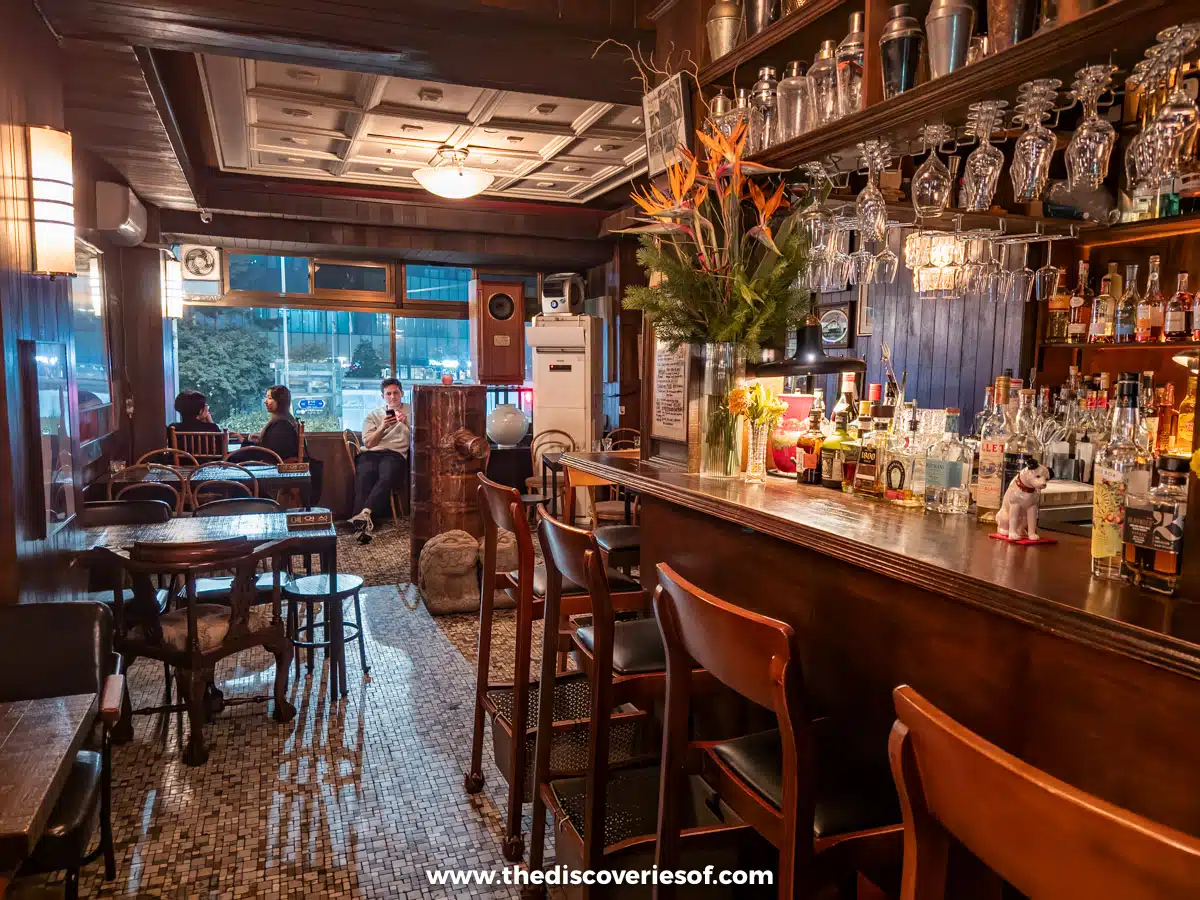
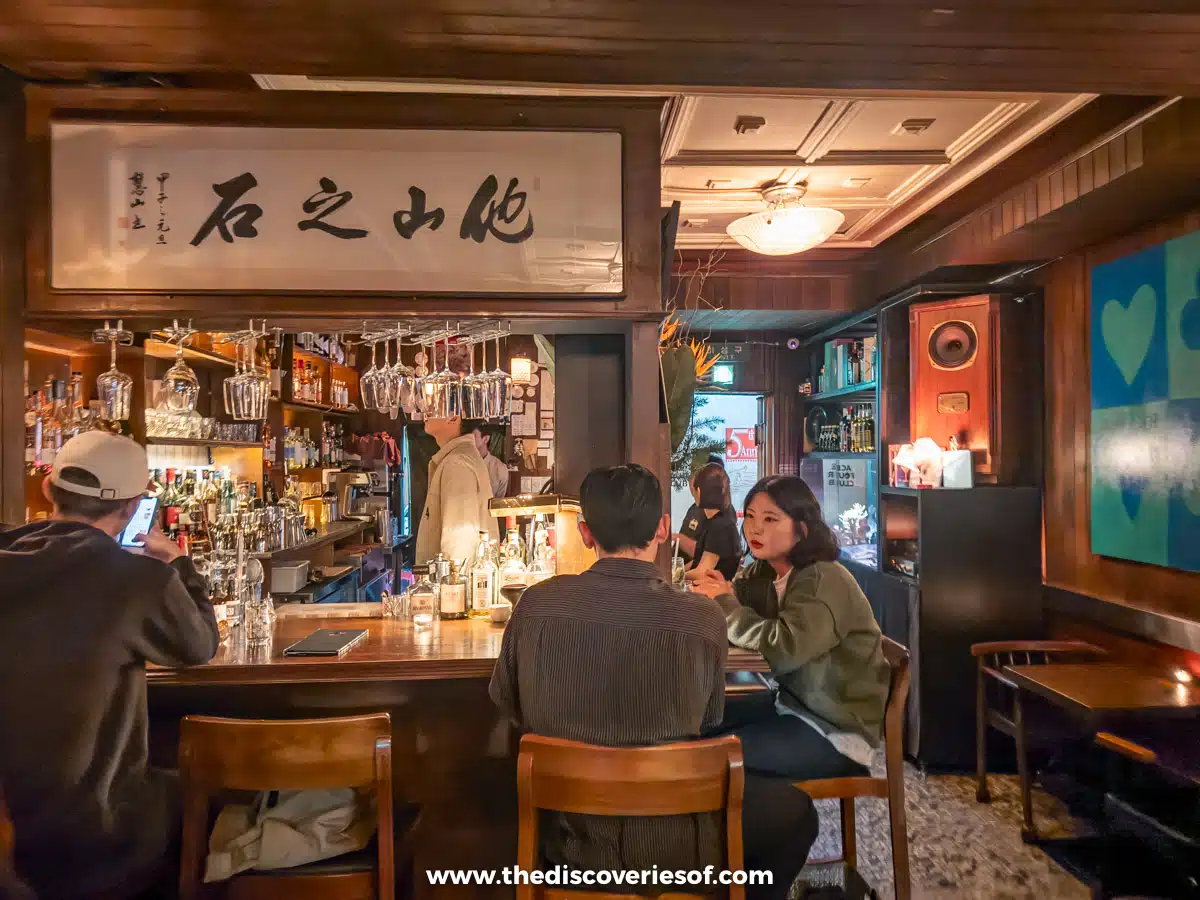
Ace 4 Club is one of the chicest cocktail havens in the electric Euljiro-dong neighbourhood, so you know it will be a good time right off the bat.
When I first laid eyes on the 60-year-old teahouse interior, I had to pinch myself. This place has style for days. But it’s not just about the impossibly charming decor. Cocktails here are equally impressive. Order anything on (or off) the menu, and I promise you’ll enjoy your time.
Take a seat at the hardwood bar, which wraps around the expert bartenders, giving you a front-row seat to the best show in town. Or walk over to a table by the window and enjoy a perfect G&T or whiskey highball overlooking the non-stop action on the city streets below.
I heard a rumour there’s even a second room; if you ask the friendly bartenders, maybe they can guide you there.
Enjoy a Thrill Ride at Lotte World in Jamsil
Another adventure across the Han River is Lotte World, an amusement park that has entertained locals and tourists in Jamsil-dong since 1989.
The indoor/outdoor space is a massive multi-purpose attraction featuring both an indoor and outdoor amusement park (Magic Island is outside) and numerous attractions, like an observation deck that’s 500 metres high, an ice skating rink, and an aquarium.
For the adrenaline junkies, Atlantis is a fun roller coaster that drops from 72 feet. If you’re afraid of heights, you may want to skip this one.
It’s a little pricey, but if you time it right, it’s not too bad. Tickets are 62,000 won (£37), but you can knock that down to 50,00 won (£30) if you enter after 4 pm.
Top Tip
Alternatively, you can walk around Jamsil-dong and find quite a bit to do. There is the Olympic Park (which hosted the Summer Games in 1988) or explore Jamsil Hangang Park, one of the 12 Han River parks.
Hike Up Inwangsan
If you’re looking for a fun and FREE thing to do in Seoul (well, it will only cost you all the oxygen your lungs can gulp in), climbing Inwangsan is a great way to get some cardio while taking in panoramic views of the city centre.
Located just above Gyeongbokgung Palace, it’s a welcome green space in the heart of South Korea’s capital. Bring your hiking boots for this one, it’s not your average urban hike.
You’ll scale up a well-marked but steep climb up the rocky mountain, which has over 550 feet of elevation change. It’s a short 1-hour hike, but may have you breathing heavily in a hurry.
Start your day early, and you can enjoy the best sunrise views in Seoul from the top.
Top Tip
You can hike Inwangsan at any time of the day (or night). But the park is closed on Mondays, so schedule your trek for another day of the week.
Walk Around Gwanghwamun Square
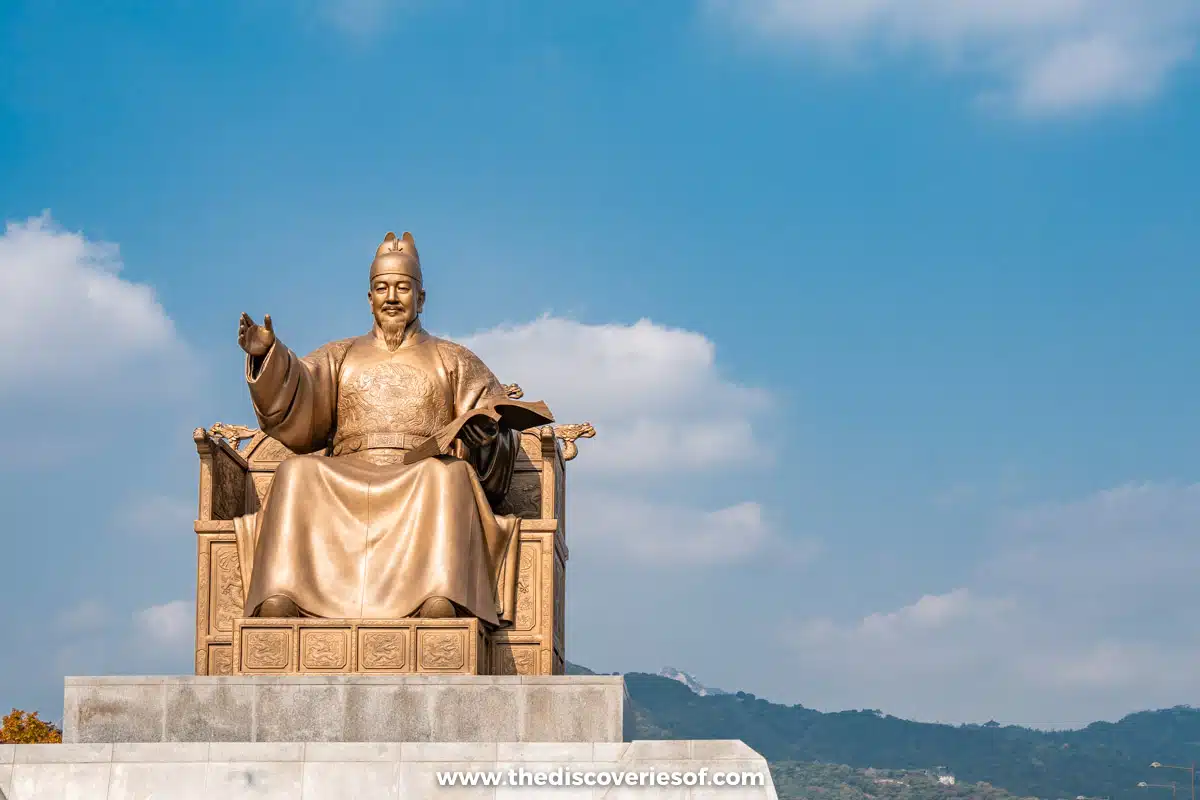
Gwanghwamun Square isn’t just any town square. The 555 x 34-metre (1,820 x 112-foot) urban centre is not just big in size, it’s one of the city’s most important historical sites and dates back centuries.
When the Joseon Dynasty ruled Seoul (and all of South Korea), Gwanghwamun Square was where many of the most influential political figures met within the walls of government buildings.
Because many of these landmarks were demolished under Japanese rule, the area looks very different today than it did in times past. That said, over the past couple of decades the South Korean government has successfully changed it from an unsightly freeway to a beautiful urban space for locals and tourists to enjoy.
Top Tip
Spend an hour or two walking around and take in the beautiful tributes to Joseon-era icons like Sejong the Great and Yi Sun-sin, a war hero from the 16th century and the view of Inwangsan.
Design Your Own Traditional Seal
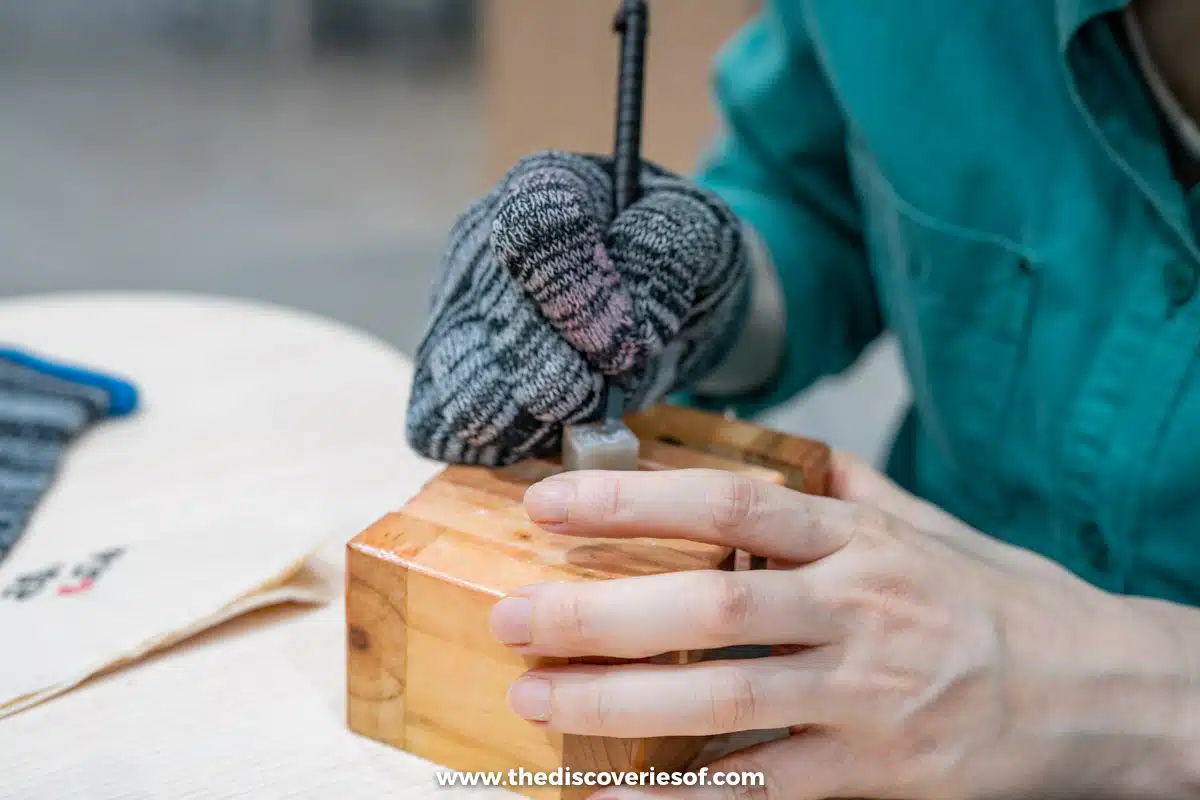
Ready to learn a little more about Korean culture? Don’t miss a chance to create your very own stone seal (dojang) with a local guide.
You can carve your own traditional seal from stone, which (along with hardwood) is how Koreans have signed their names for centuries. It’s not only fun to learn from an expert, but you get a little something to take home with you – a personalised seal.
It’s a fun way to experience a historic Korean tradition and get some good practice with the Korean alphabet (Hangul). Once you design your stamp with help from a pro, it’s ready to use when you get home.
How do you use it? Just dip the stamp in ink and sign your name in Hangul on your holiday cards or business letters. It’s a fun and authentic experience that’s uniquely Korean.
Walking & Shopping Samcheong-Deng
Just next door to the Bukchon Hanok Village is another historic Seoul Village, Samcheong-Dong.
While Bukchon is known as a bit of a time warp, this neighbourhood has some decidedly more modern shops that fit tidily into the storied village. You can still find hanok houses and cobbled streets, but there’s a ton of hidden gems if you want to get your shopping, eating, and drinking on. Of course you do.
So, what shops and restaurants should you add to your itinerary? I got you covered.
You can pick up some K-beauty products at Beauty of Joseon, relax and unwind at a local coffee shop, or try a pastry from the (not so relaxing but totally delicious) Onion Anguk.
Cap it all off with a bowl of hand-pulled dough soup at the Michelin-recommended Samcheongdong Sujebi and you’ll know why this is low-key the coolest neighbourhood in Seoul.
Feast on Korean Pancakes at Sunhui-ne Bindaetteok
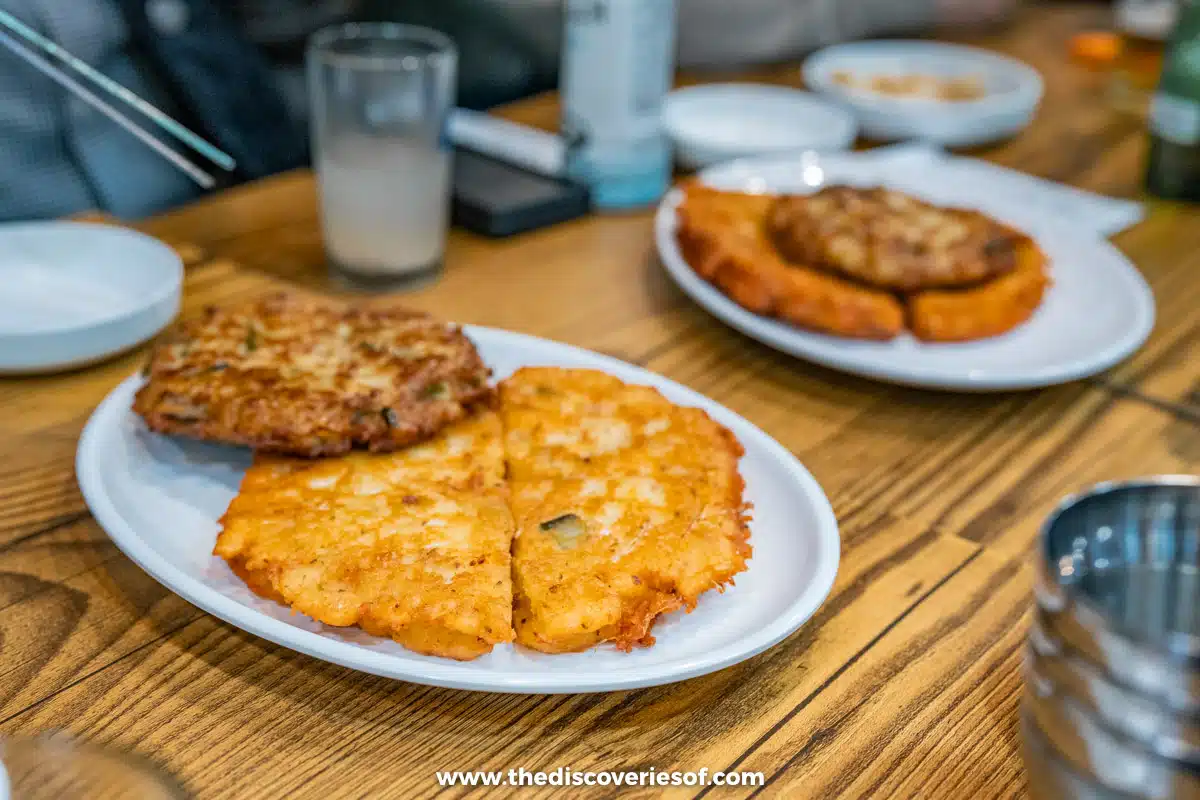
You’re going to try a lot of great street food when you walk around Gwangjang Market, but it’s all about the pancakes. Trust me.
Sunhui-ne Bindaetteok is where you want to go for mung bean pancakes, which, despite the crowds, seem to be made with the most love. They are literally packed with rich, fatty pork, bright veggies, and kimchi. It’s divine.
The small stall turns out tray after tray of delicious, savoury snacks for around £5. The place is high energy, super busy, and offers a no-nonsense meal that you eat quickly while still savouring every single bite.
Be sure to use all the dipping sauce, which is an addictive combination of sesame, soy, and vinegar.
Top Tip
Sunhui-ne Bindaetteok gets really busy, so try to get there for an early lunch or be prepared to wait.
Visit the Seoul Museum of History
The Seoul Museum of History is not only one of the best things to do in the city, it’s also free. Make time to visit this small but interesting space, which features exhibits celebrating the city’s history over centuries.
Whether you do this before visiting Joseon Dynasty palaces or after, you can learn a lot about the history of Seoul, like when it became the capital and what happened during the Japanese occupation in the 20th century.
The rooms are well organised and walk you through the long, complex history of Seoul over about 600 years. My experience may be different from yours (a lot of the attractions rotate), but what’s guaranteed is that you’ll learn all about Seoul’s history through artefacts, audio-guided tours and digital presentations.
If you go between now and the end of March 2024, you can see how restaurant culture and customs have changed over the years in a popular exhibit.
Browse Through the National Museum of Modern and Contemporary Art
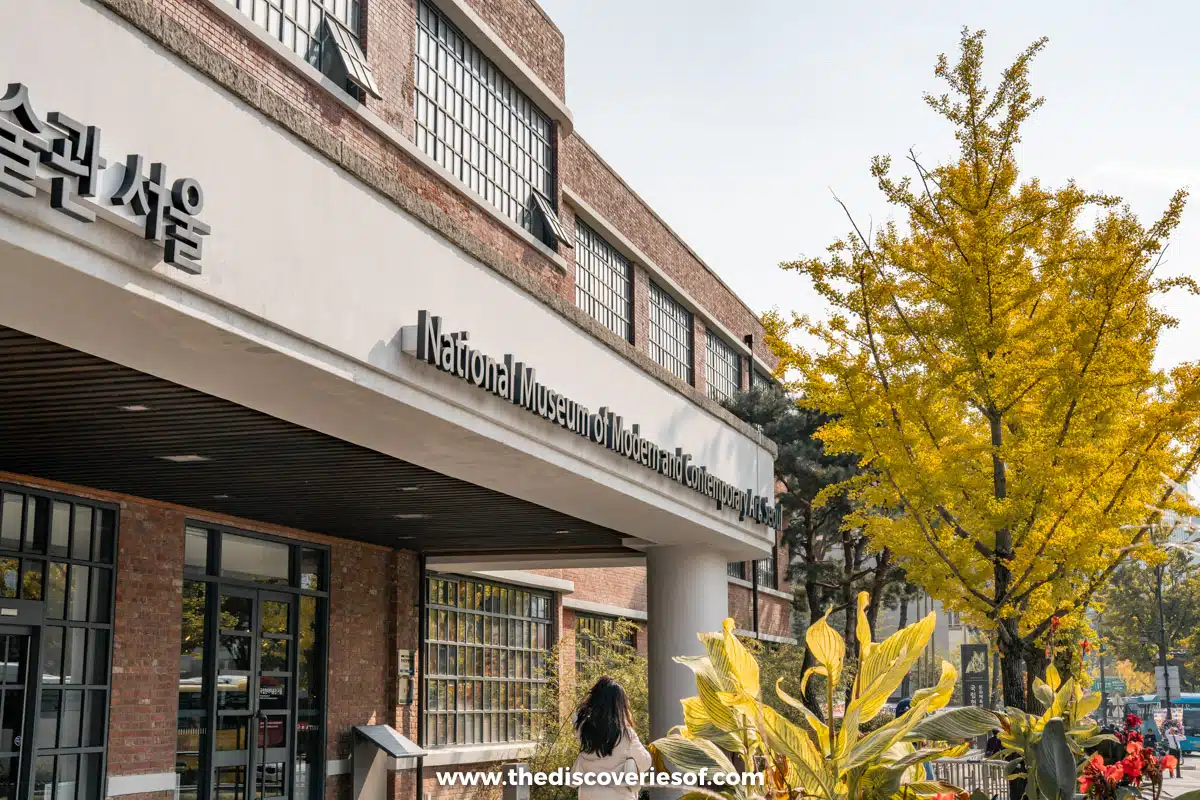
You might not know it, but Seoul is quickly becoming a hotbed for modern art, with some of the most exciting artists and exhibits anywhere in the world.
The National Museum of Modern and Contemporary Art is the place to go to see local and international works on a grand scale of 3,428 square metres (36,900 sq ft).
Take your time through the 8 different galleries, taking in as much of the local art as you can. I thought the solo exhibition of legendary artist Kim Kulim was particularly cool. The paintings, videos, and environments showcase just how dynamic this artist has been for about 70 years.
To get there, take the train to Anguk or Gyeongbokgung Stations, both of which are a short walk away.
Top Tip
Make sure to go to the 3rd floor to see a larger-than-life replica of Seoul (in miniature form)
Discover the Sobering History of Seodaemun Prison
Though it was built just before the Japanese occupation of Korea, Seodaemun Prison is one of the most sobering reminders of the (not-so-distant) past in South Korea.
Thousands of Seoul residents lost their lives when Japan annexed Korea, many of them at this small but notorious prison where 3,000 inmates shared cells and property grounds in what was intended for around 500 prisoners.
It’s not an easy visit, but that’s part of why I think it’s a must-do when you’re in Seoul. Learning about inmates’ stories for survival and their dedication to a free Korea (some at the cost of death) really helps you appreciate modern-day Seoul.
You can visit exhibitions inside and out. These include artefacts from local activists and inmates, a look inside the torture chambers, and the brutal architecture of the partitioned exercise yard, underground corpse removal area, and imposing watch tower.
Tour the Jogyesa Buddhist Temple
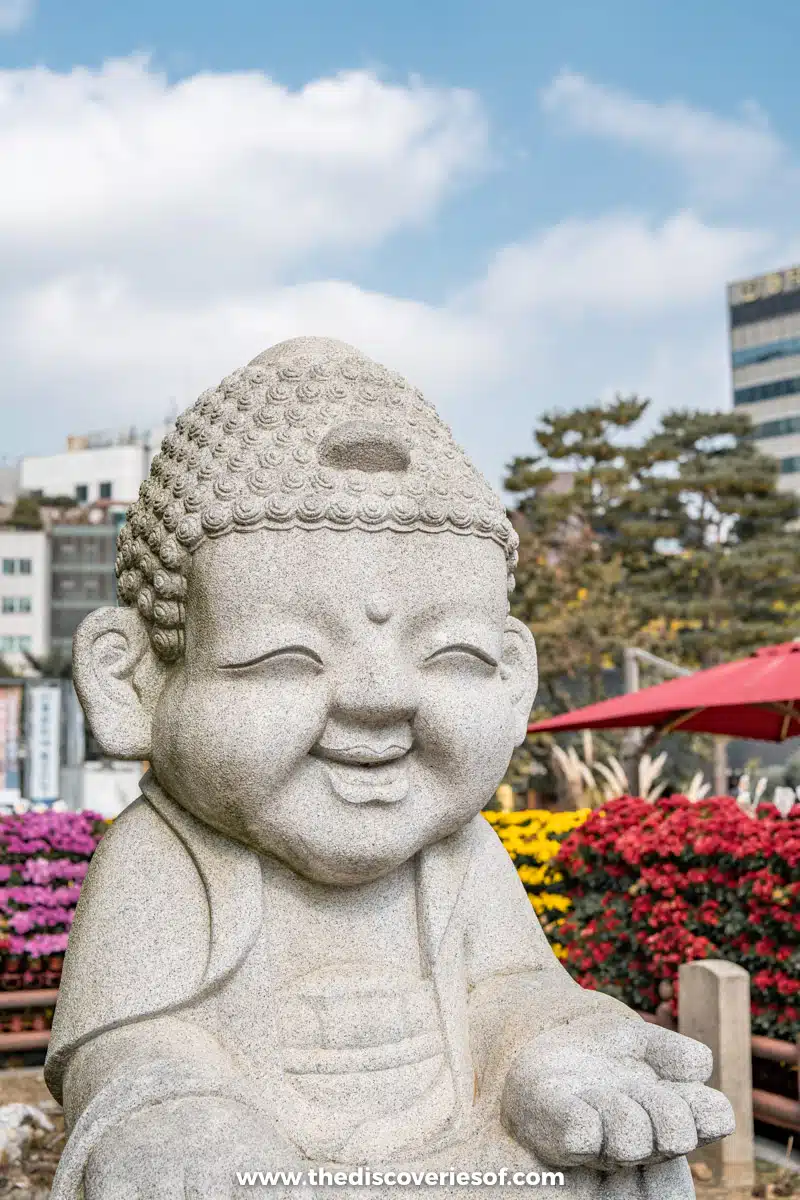
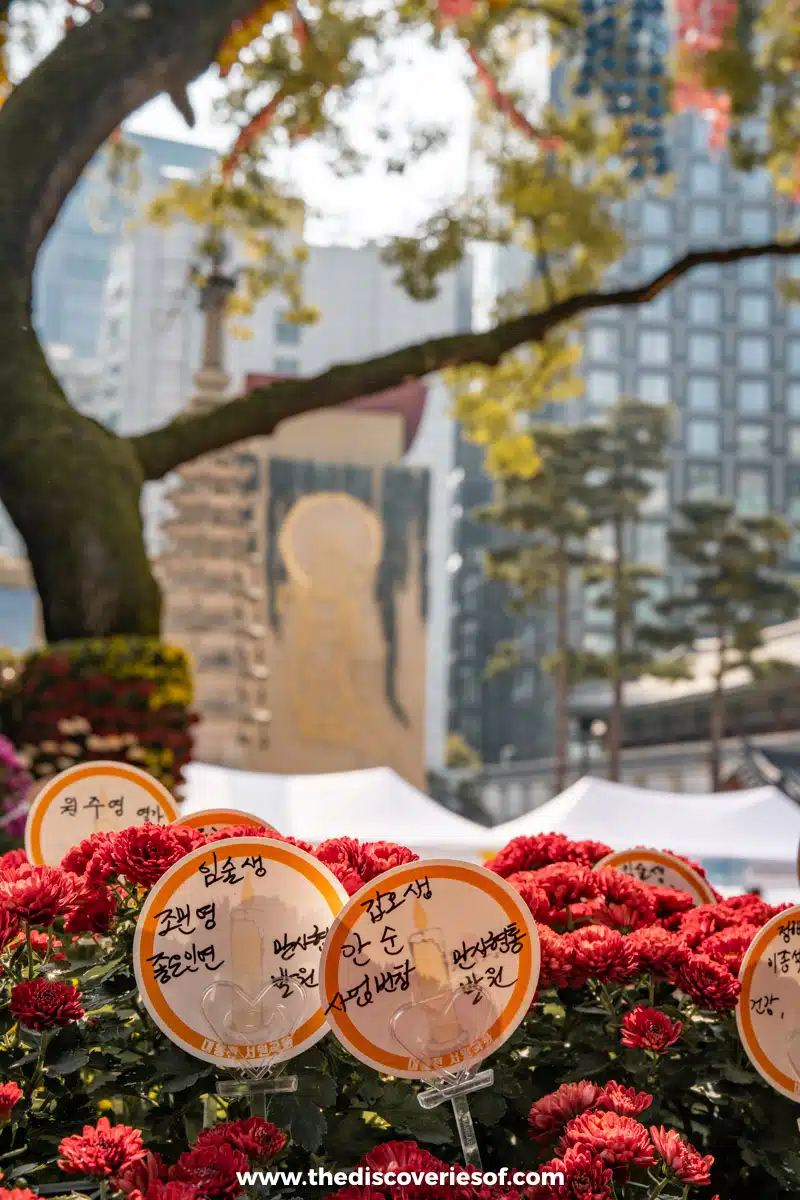
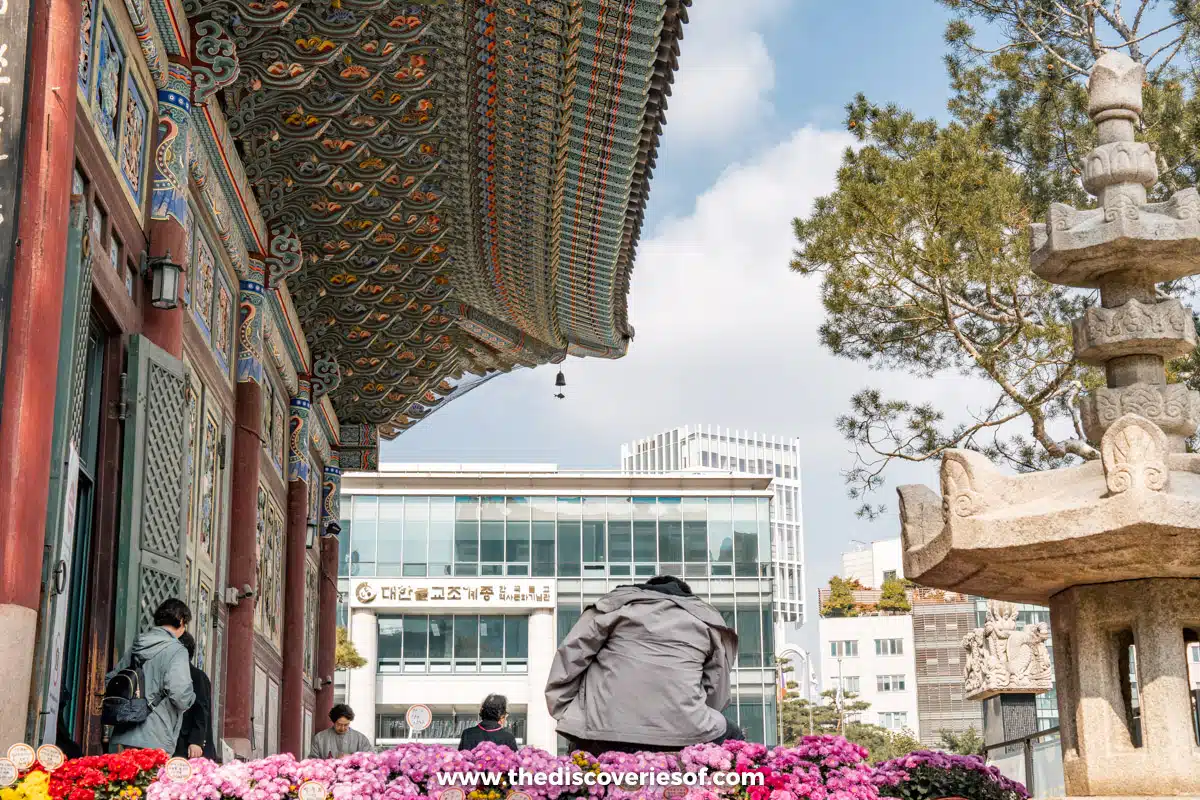
Jogyesa is a beautiful Buddhist temple that’s surprisingly recent (1910), but some areas around the property are much older. In fact, if you look inside the courtyard you can see white pine trees that are over 500 years old.
The main temple (Daeungjeon) is a stunning building that pays respect to Joseon-era architecture with its wood facade and tiled roof curling toward the heavens.
A rainbow of colours decorates the doors, windows, walls, and roof. It’s particularly striking next to the rather bland office buildings and stores nearby.
But once a year, the busy temple takes on even more life than usual, during the Lotus Lantern Festival. Visit in the spring (particularly in April and May) and see the courtyard adorned with a kaleidoscope of colourful lanterns above.
Top Tip
If you can time your trip for the lantern parade (mid-May), you’ll see gorgeous floats, traditional hanbok dresses and festivities all around the temple.
Party and Dine in Itaewon
Ok, so you just can’t go to Seoul without exploring a bit of the nightlife hot spots. You can’t. Itaewon is one of the liveliest places to grab some cocktails, Korean BBQ and street food anywhere in the city.
Dress up and head out for a fun evening with a decidedly international bent, where you can find world-class food from around the globe for just about any budget or palate.
So where do I think you need to check out when you walk the buzzing streets of Itaewon? First, head to Mikkeler bar for a beer from the famous gypsy brewer. The Danish cult brewing icon went from not having a physical brewery to owning them all over the world, including this stylish outpost.
Then, hit up Maple Tree House for an upscale Korean BBQ experience with some of the best quality meats you’ll find in a space that’s popular with locals and visitors.
Park Hop at Han River Park
I mentioned Han River Park (Hangang) earlier, which is no surprise because the park covers a sprawling 41.5 km (25.7 miles) of Seoul. In short, it’s massive. As such, the 12 individual parks that make up the urban green space offer up a ton to do.
From checking out rotating art installations (like a really cool giant ear you can talk into) to camping at Nanji Hangang Park (yes, really), there is a ton to see and do outside near Han River.
There are also excellent biking trails at Banpo Hangang and Gwangnaru Hangang (and bike rentals near both) if you want to get some exercise or take a leisurely walk by the water.
Top Tip
If you’re looking for entertainment and nightlife, many of the parks offer fun activities after dark, like fireworks in October at Yeouido Han River Park or night markets where you can sample some of the best street food in Seoul.
Practical Tips for Your Seoul Trip
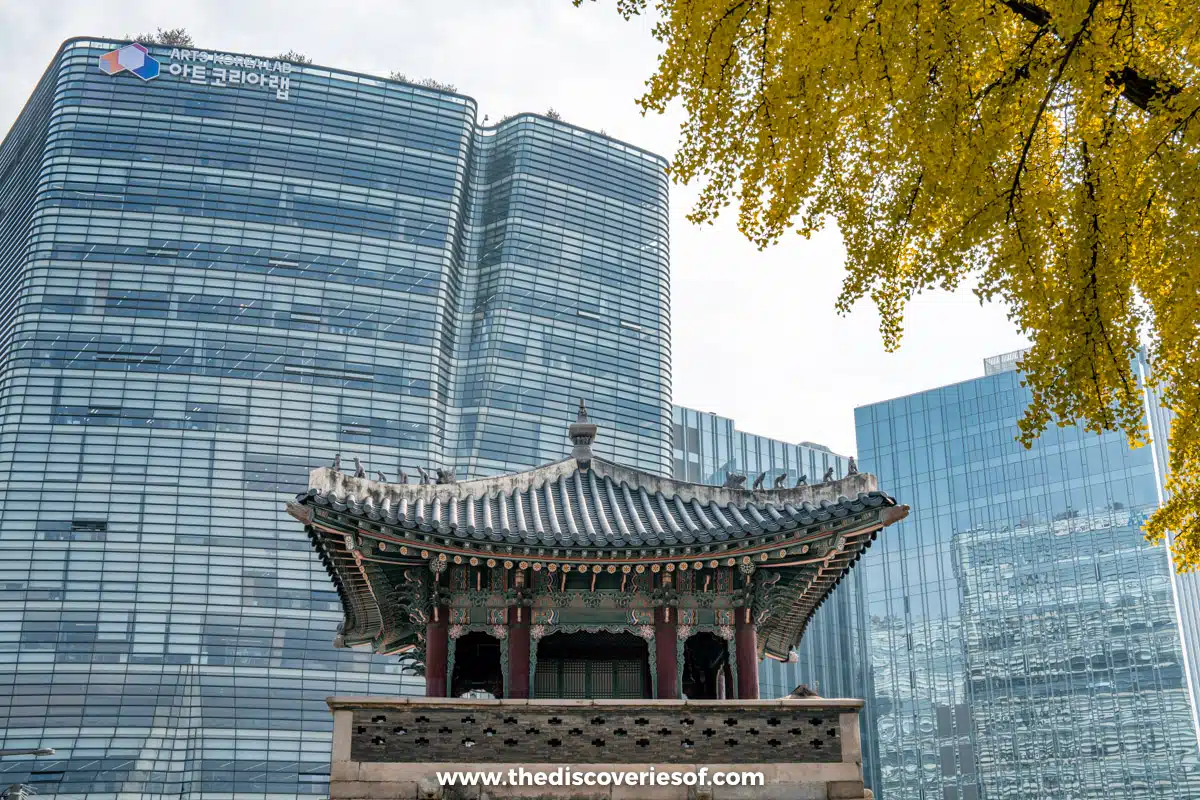
Seoul is surprisingly easy to navigate for such a sprawling metropolis. I booked my hotel last minute around Halloween (and still only paid around £250/night) and found the subway system was a breeze to rely on.
But here are a few helpful hints for your trip.
Top Tips for Your Visit
- Download Naver or Kakao before you get on the plane. Google Maps won’t help you a bit when walking around the city as most of the locations aren’t marked and it doesn’t give you directions (long standing argument between Google and the South Korean government, blah blah, snooze).
- Fill up your TMoney card at a subway station or market right away, as you’ll use the subway a ton in Seoul. Just tap in and out each time you board the train.
- South Koreans dress conservatively – even when it’s scorching hot. Pack tops that cover your shoulders and chest.
- Bring a universal adapter for the Type C and Type F plugs.
- Carry cash, particularly for markets and some smaller shops, restaurants and bars (but you don’t need to leave change for a tip).
How Long to Visit in Seoul?
3-5 days is more than enough time to see most of the destinations on this list.
Best Time to Visit
September and October offer mild weather and discounted rates at a lot of the city’s best hotels (apart from Halloween which is busy and sees prices increase significantly).
Where Should I Stay in Seoul?
The Four Points Josun Seoul Myeongdong (Mid-Range)
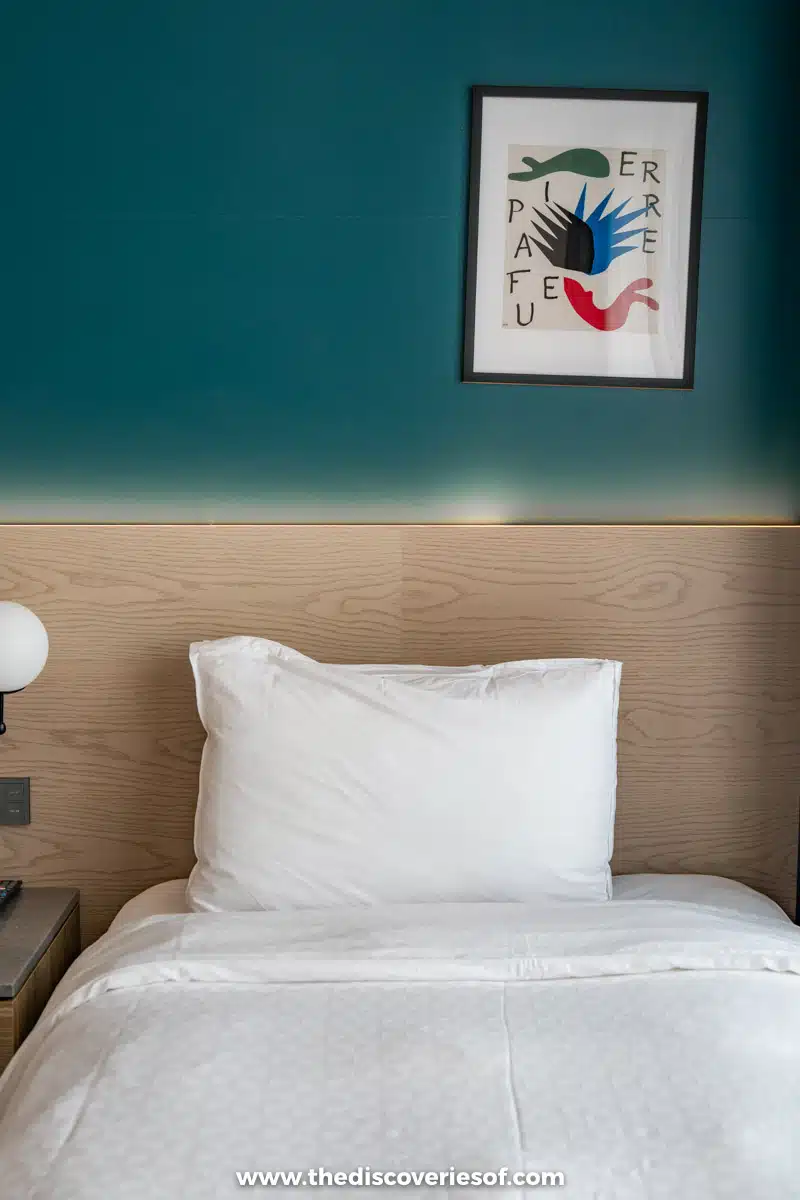
This mid-range hotel is well-located (if a tad bland), but the views of Seoul are next-level. Rooms have just enough character, and the breakfast was surprisingly great.
Check Prices and Availability for The Four Points Josun Seoul Myeongdong on Booking.com
Four Seasons Hotel Seoul (Luxury)
International cuisine, luxury amenities, and 5-star service are all reasons why the Four Seasons is one of the top luxury hotel brands in Seoul. City-view suites are the way to go for spacious accommodations with stellar views of downtown.
Check Prices and Availability for Four Seasons Hotel Seoul on Booking.com
Map
Read More Seoul & South Korea Guides
- How to Spend Three Perfect Days in Seoul
- Top Tips for Your South Korea Trip
- Unmissable Things to do in South Korea
- 10-Day South Korea Itinerary
Love This? Save and Share on Pinterest
